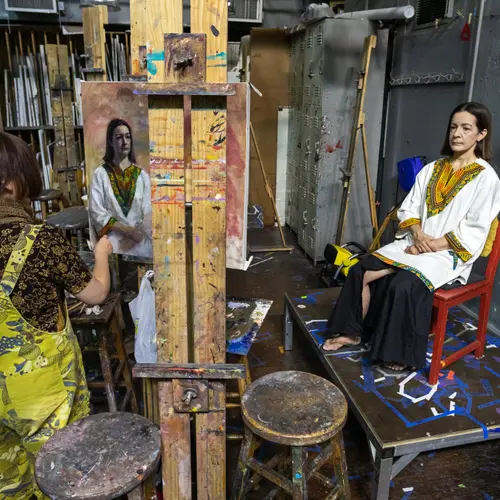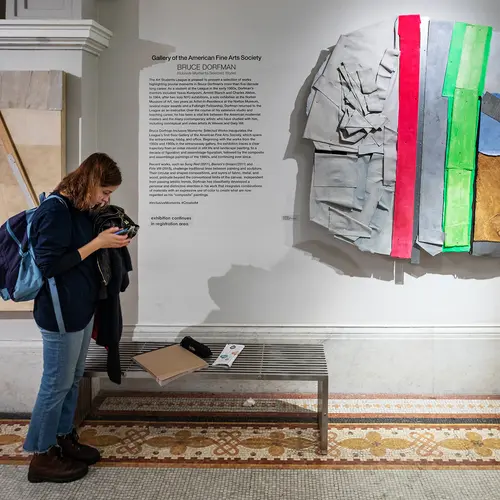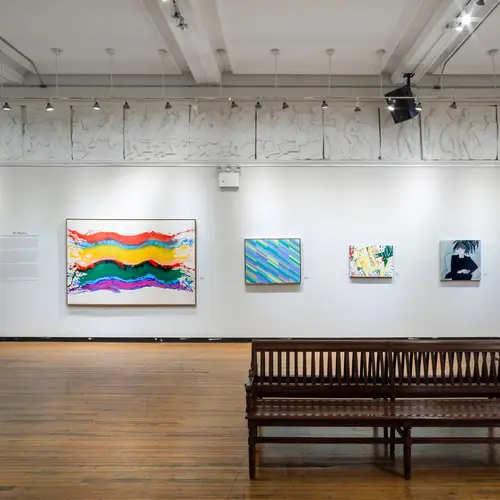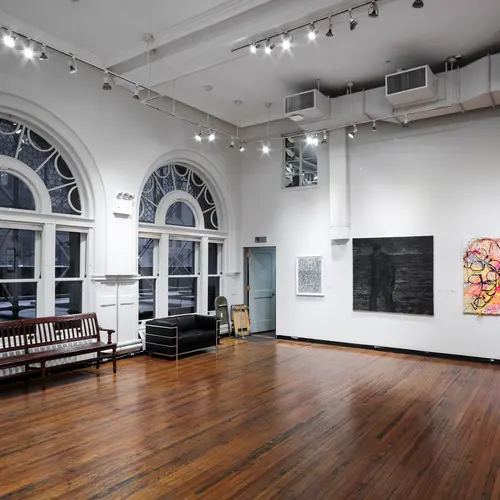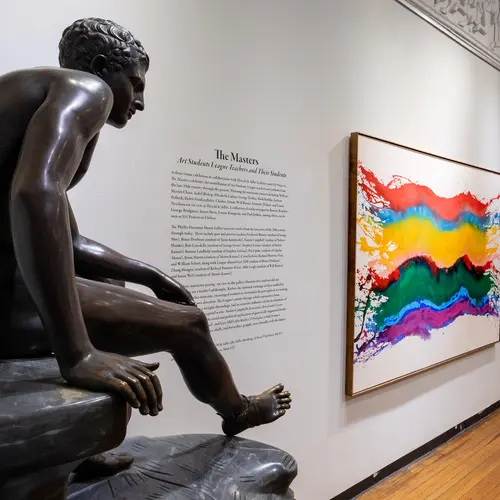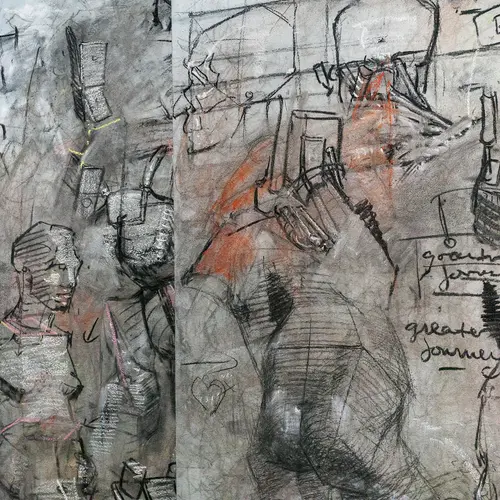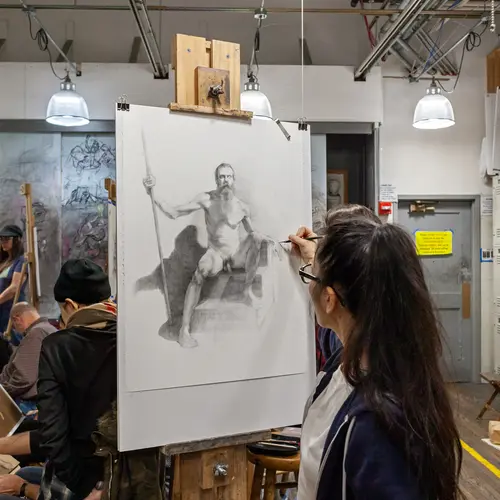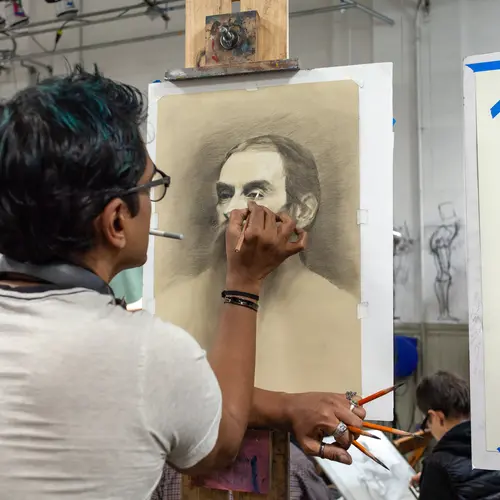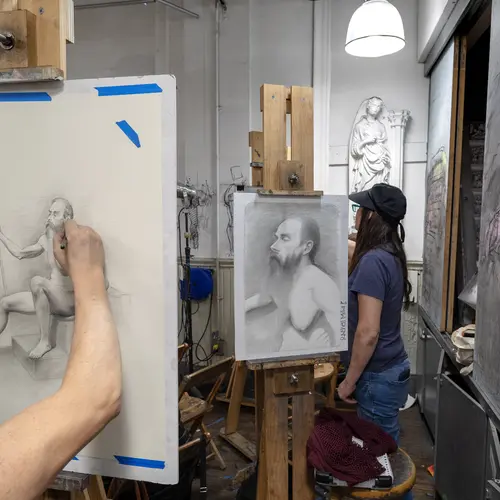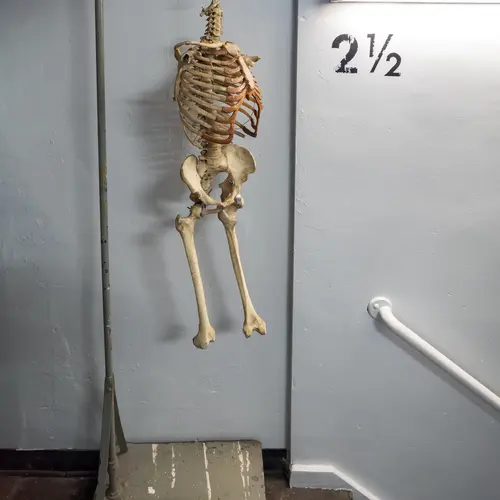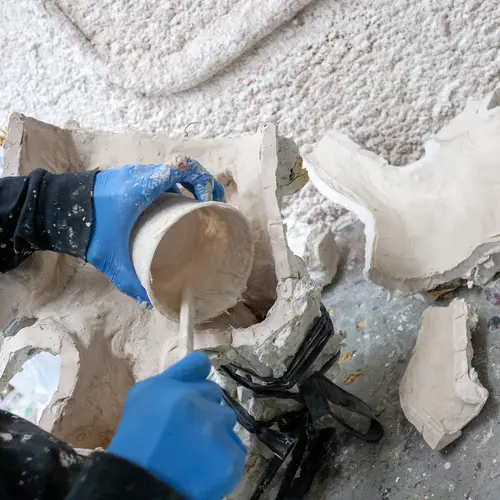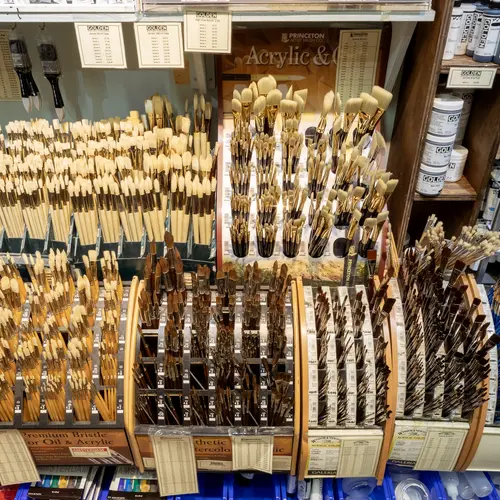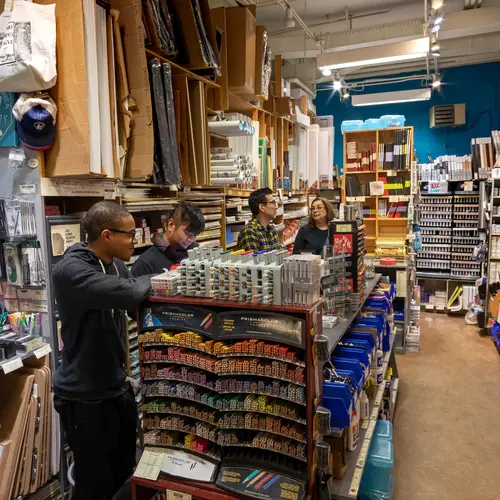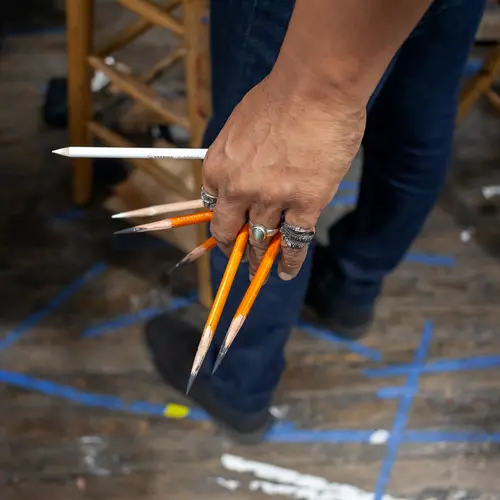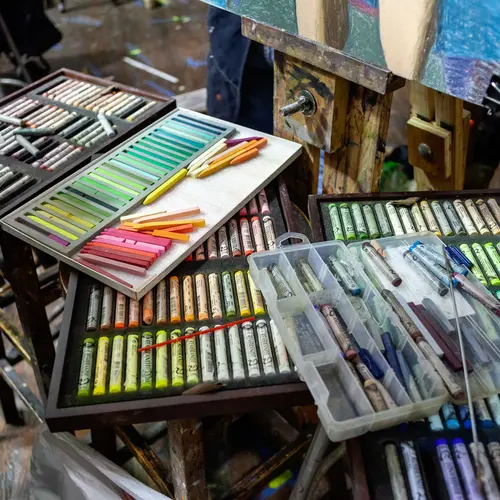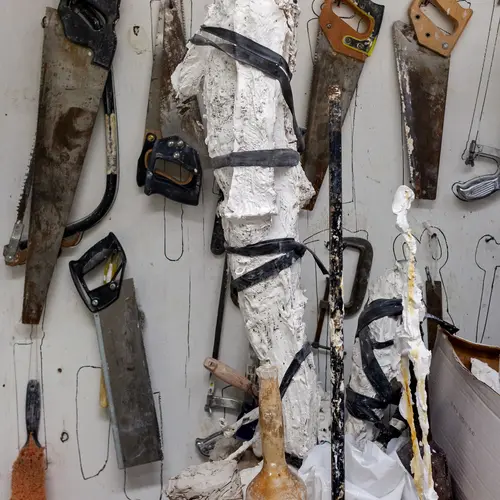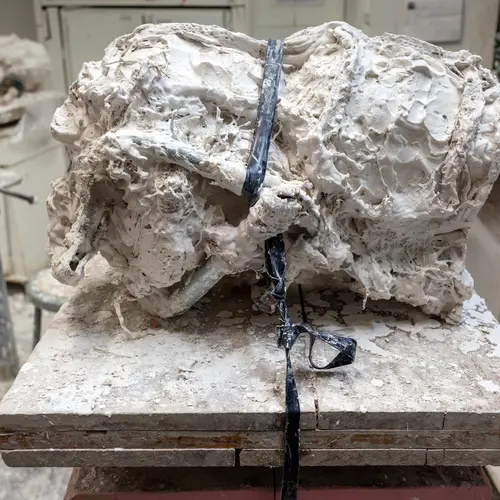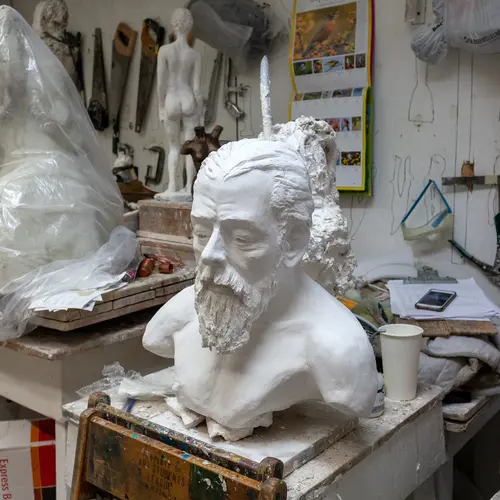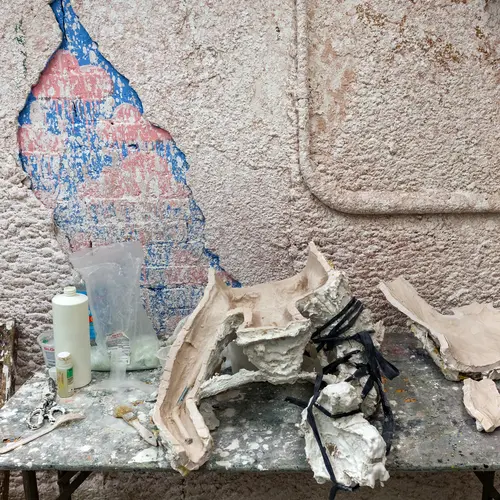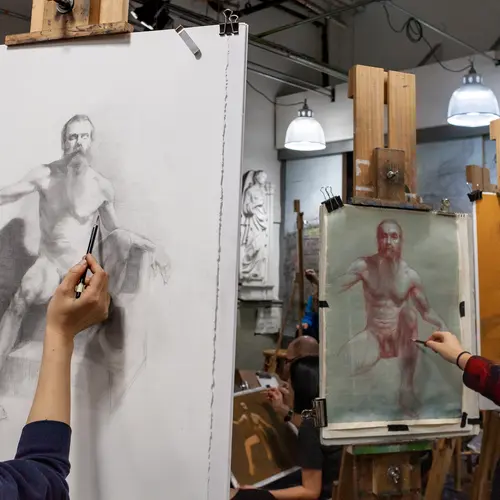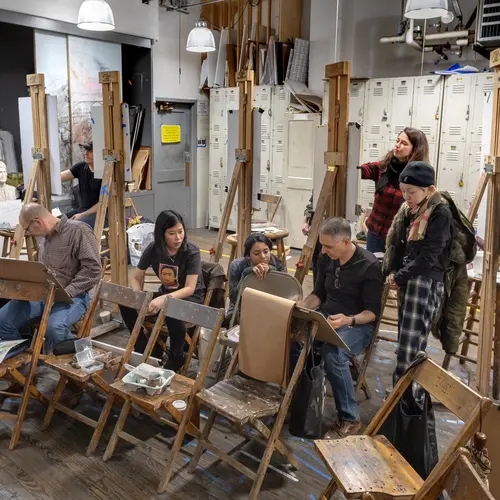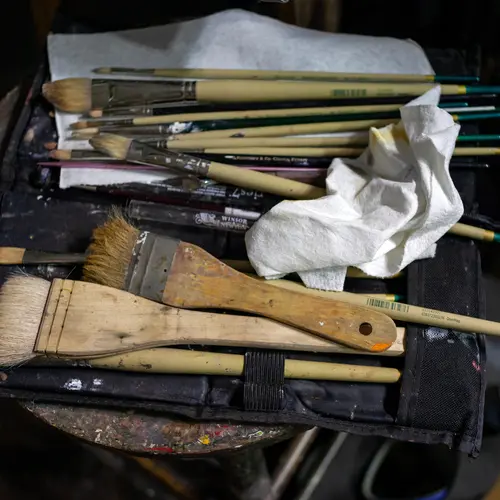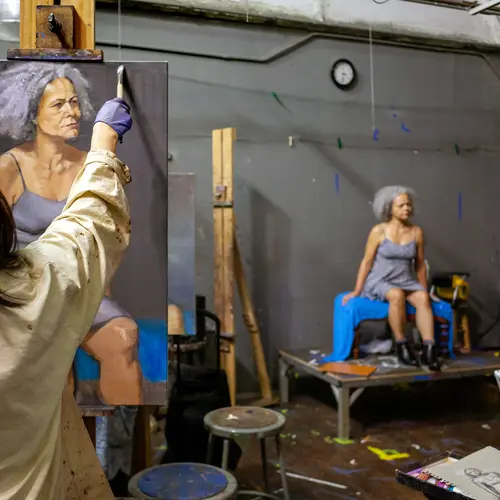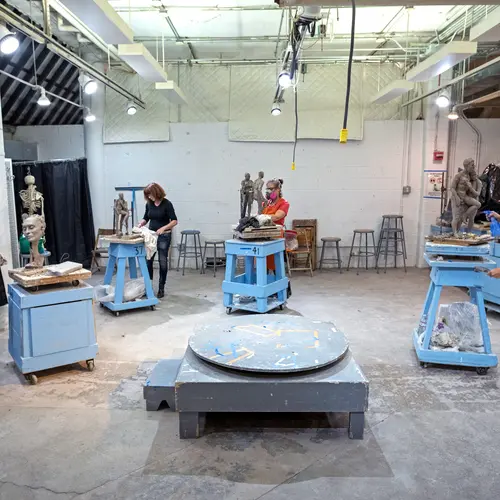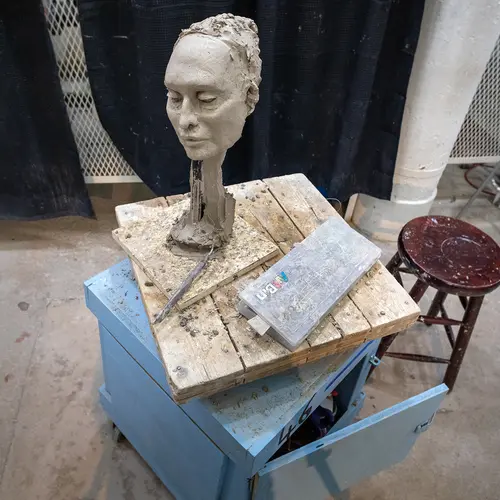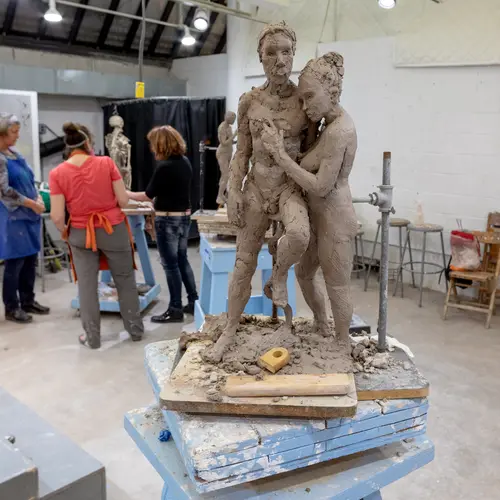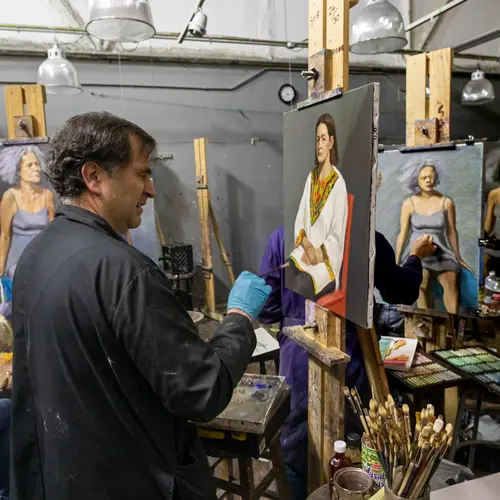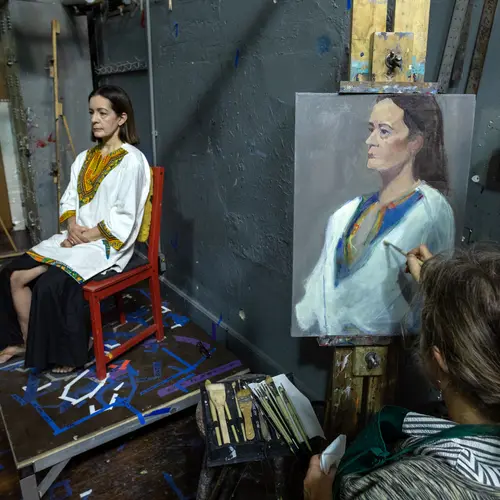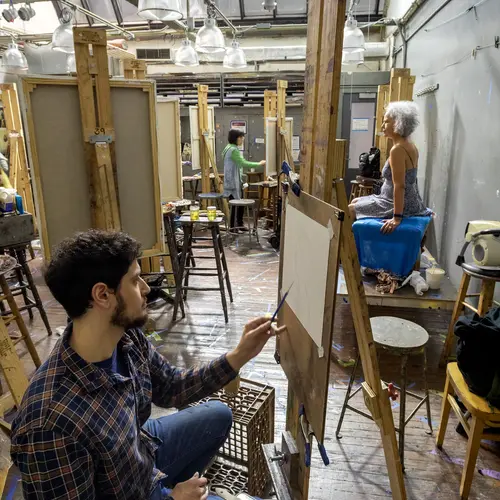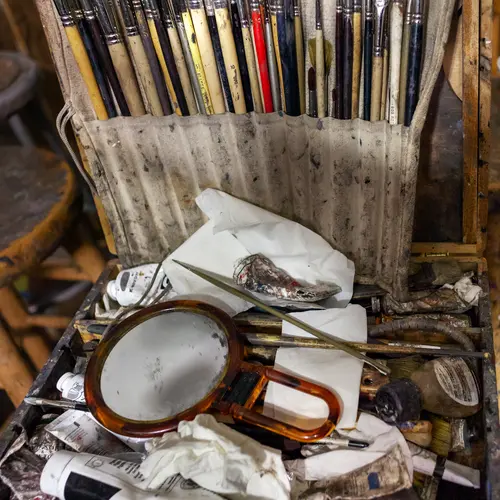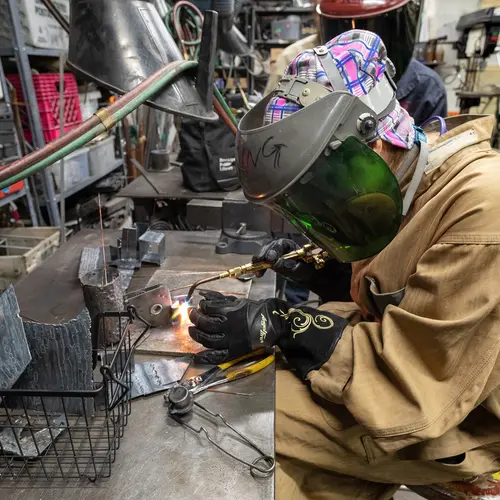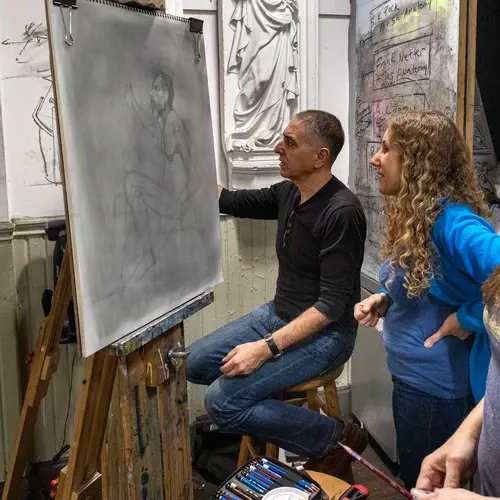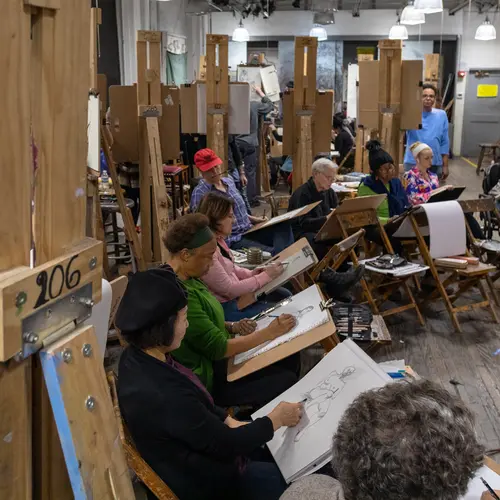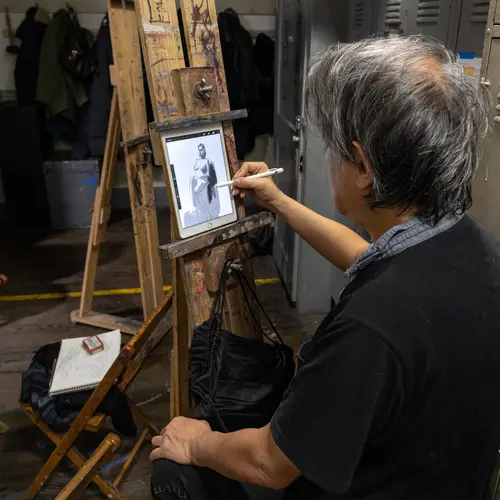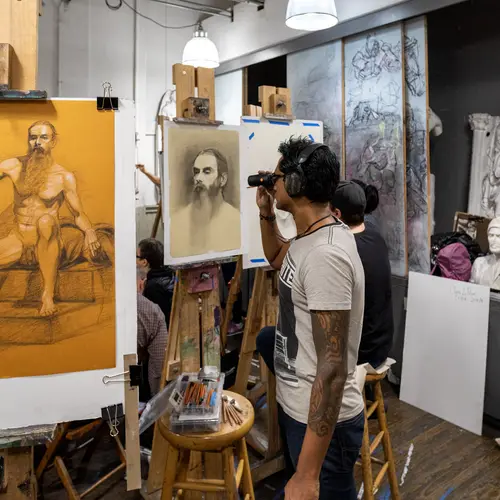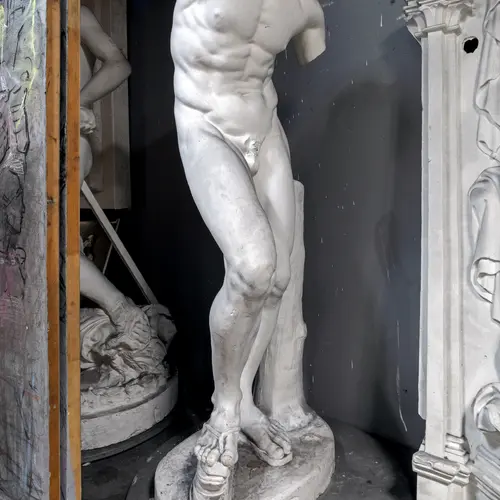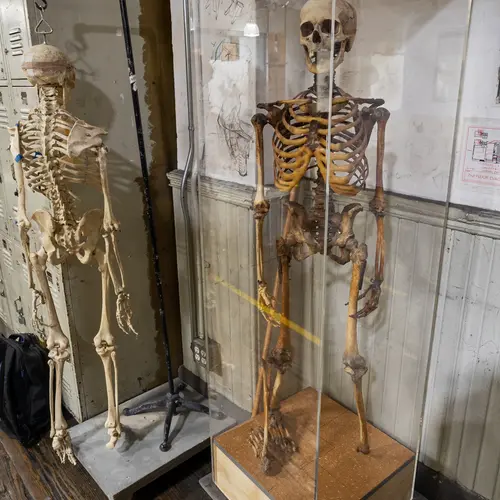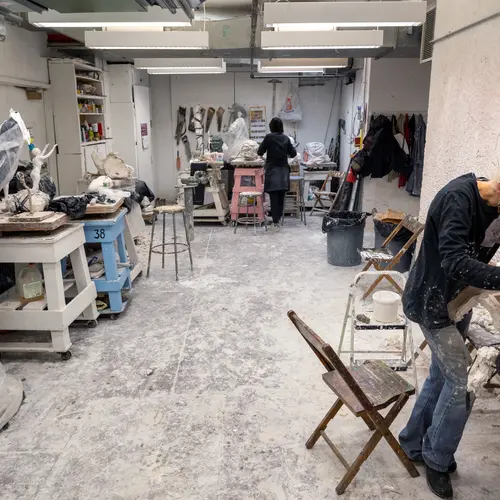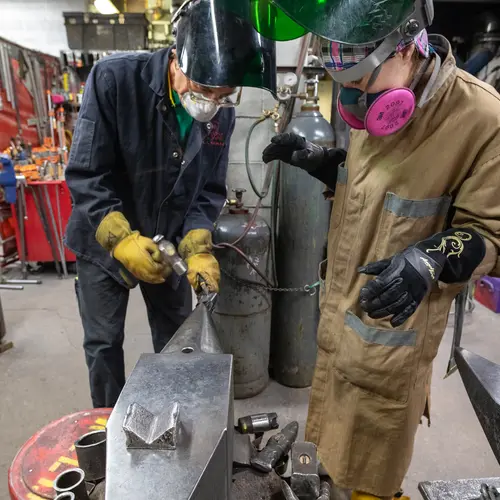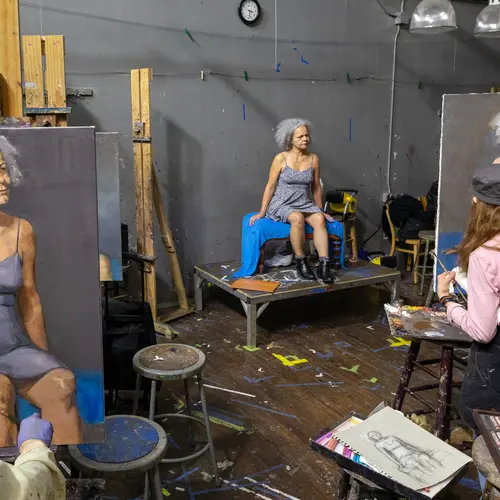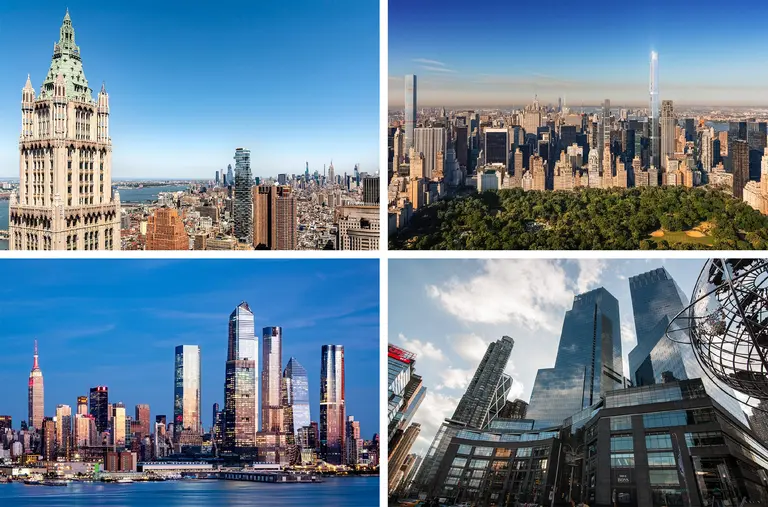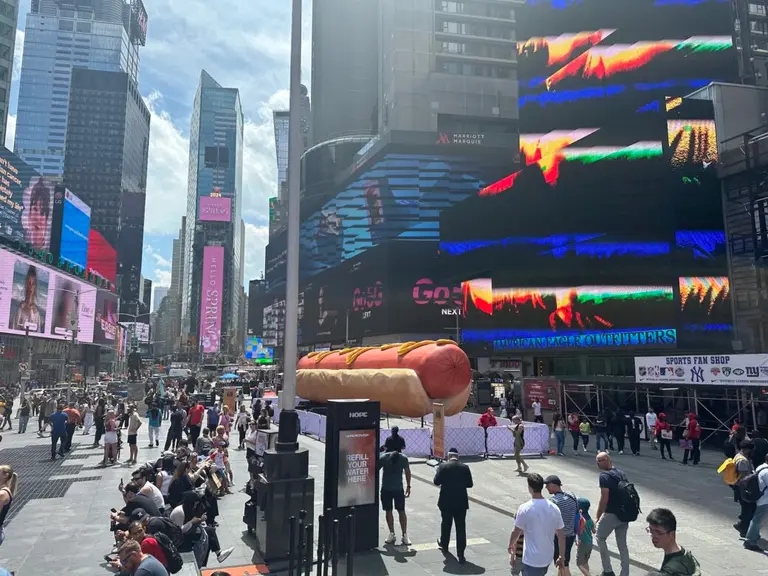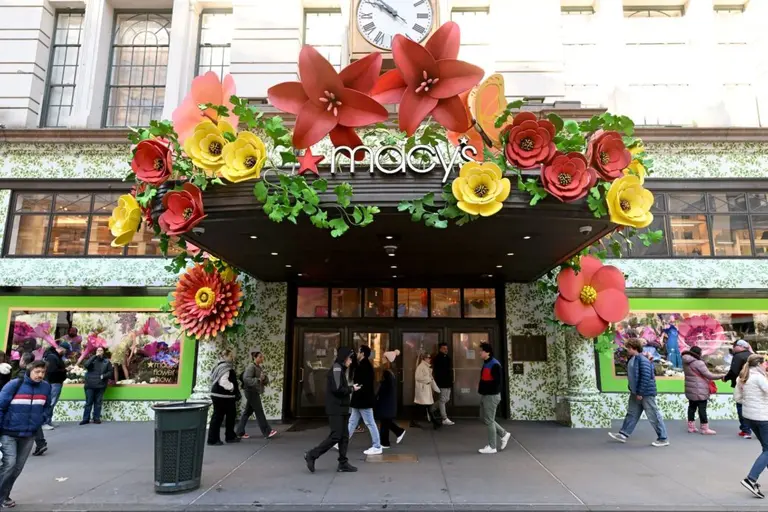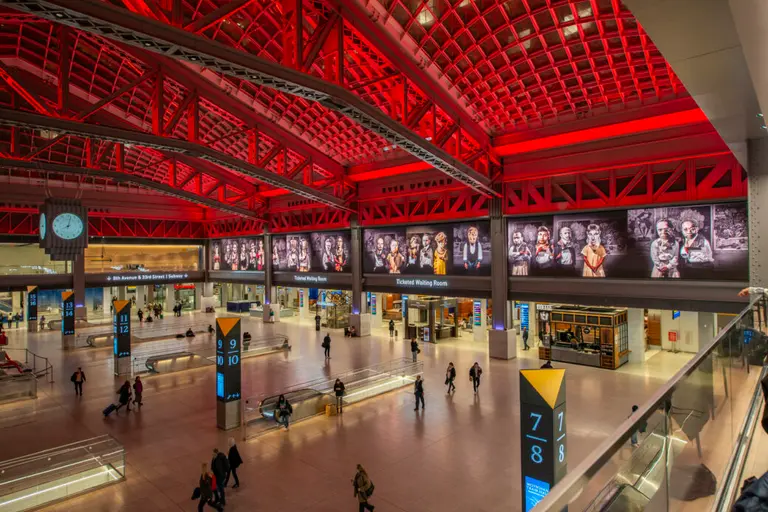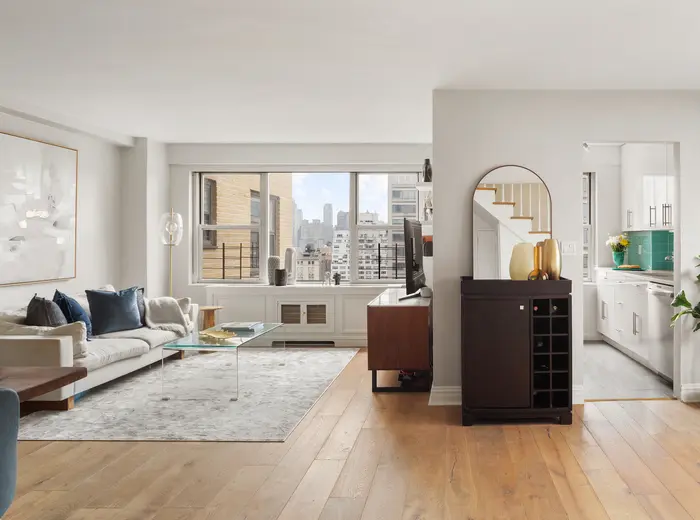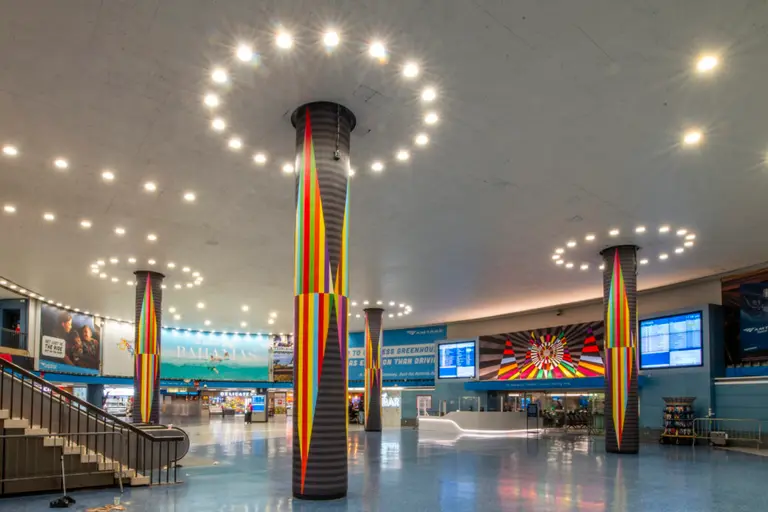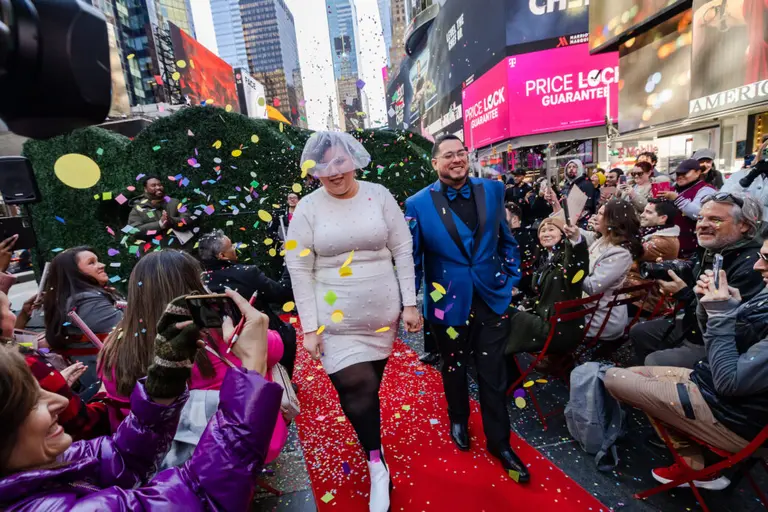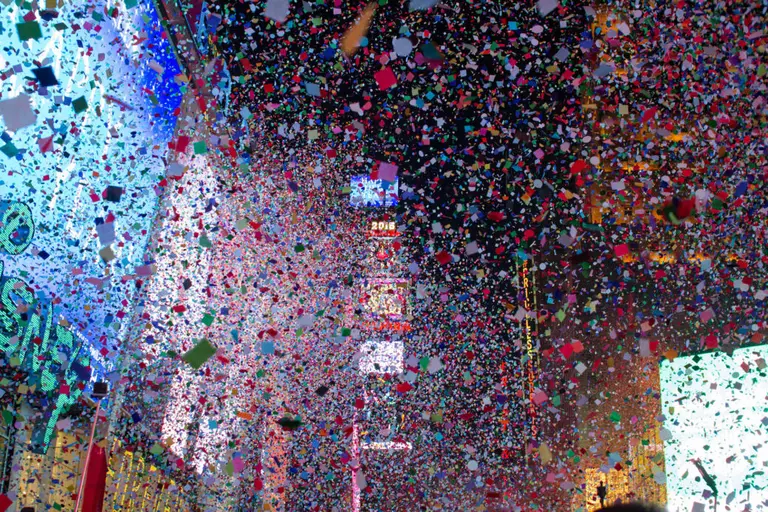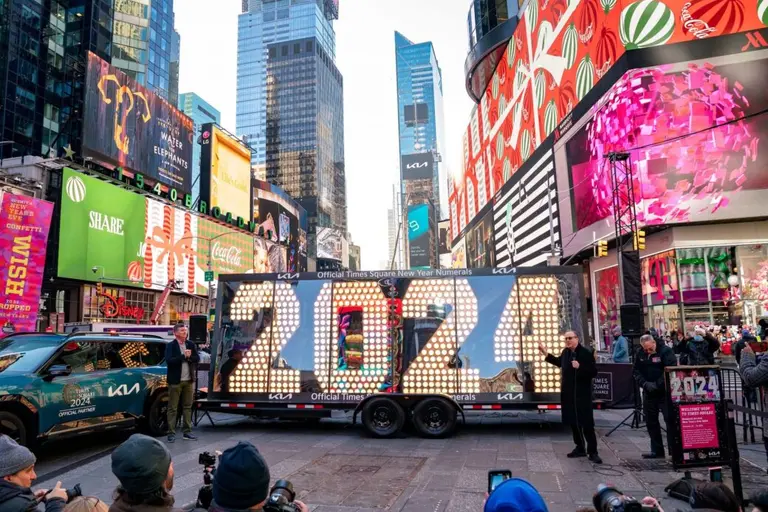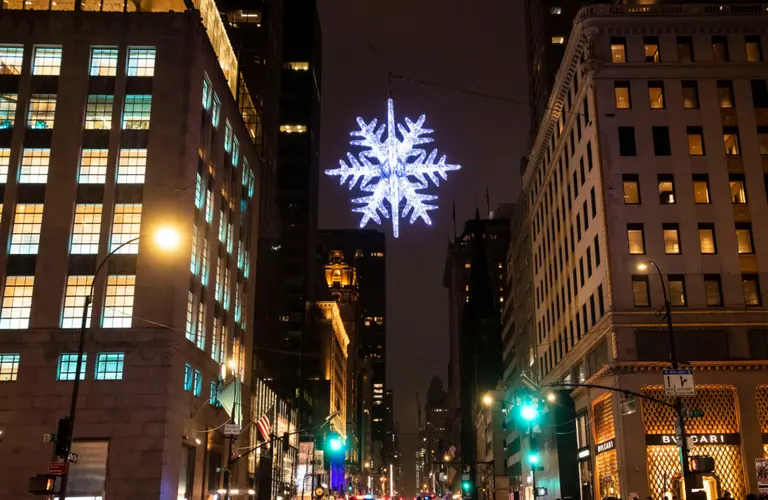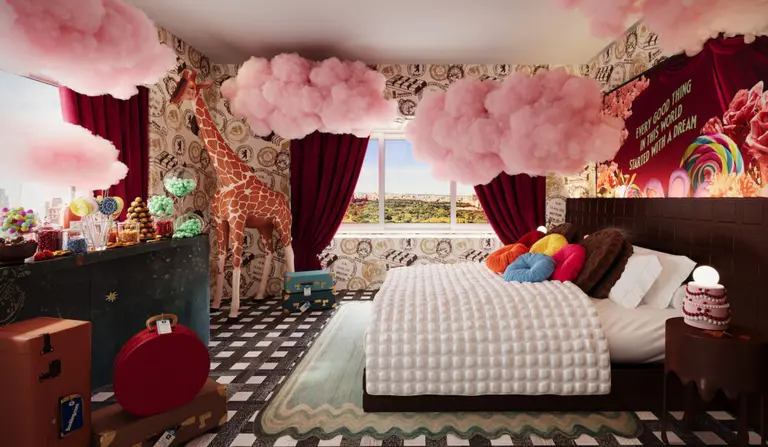For artists by artists: Inside the landmarked studios of the 144-year-old Art Students League of New York
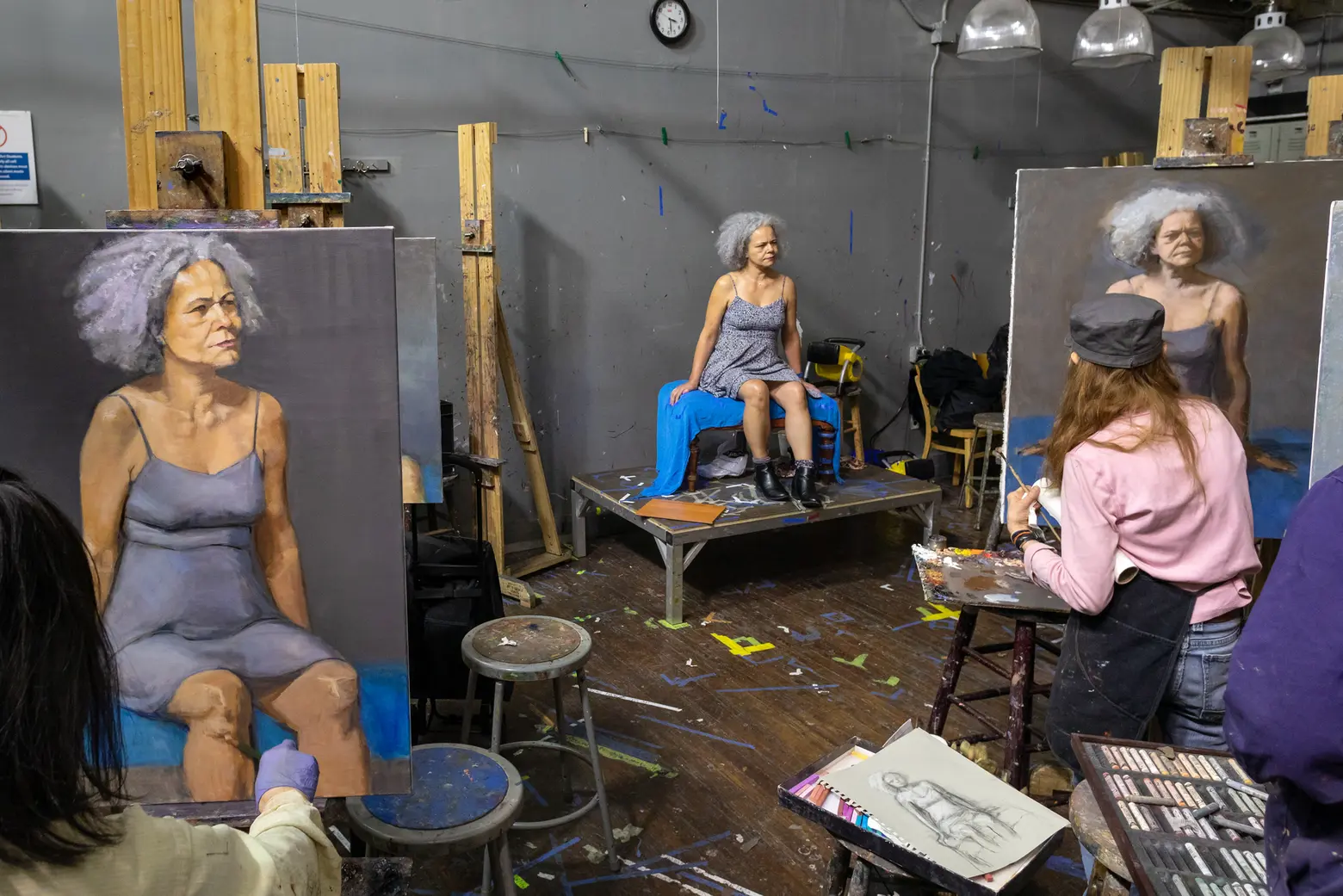
6sqft’s series “Where I Work” takes us into the studios, offices, and businesses of New Yorkers across the city. In this installment, we’re going inside the landmarked building of the Art Students League of New York in Midtown. Want to see your business featured here? Get in touch!
In 1875, a group of young students broke away from the National Academy of Design and founded the Art Students League of New York to pursue a new and more modern method of art education. What started as a small group of rebellious artists in a 20-foot by 30-foot space, turned into an internationally-recognized, landmarked institution, which continues to set the standard for art training today. In its 144th year, the Art Students League’s mission has remained unchanged since its founding: to spread the language of art to anyone interested in learning.
The nonprofit has been located in the American Fine Arts Society Building at 215 West 57th Street since 1892. A designated New York City landmark, the French Renaissance-style building was designed by Henry J. Hardenbergh, the architect behind the Plaza Hotel and the Dakota. Ken Park, the director of marketing and communication for the League, recently gave 6sqft a behind-the-scenes tour of the historic building and shared some insight into this storied establishment.
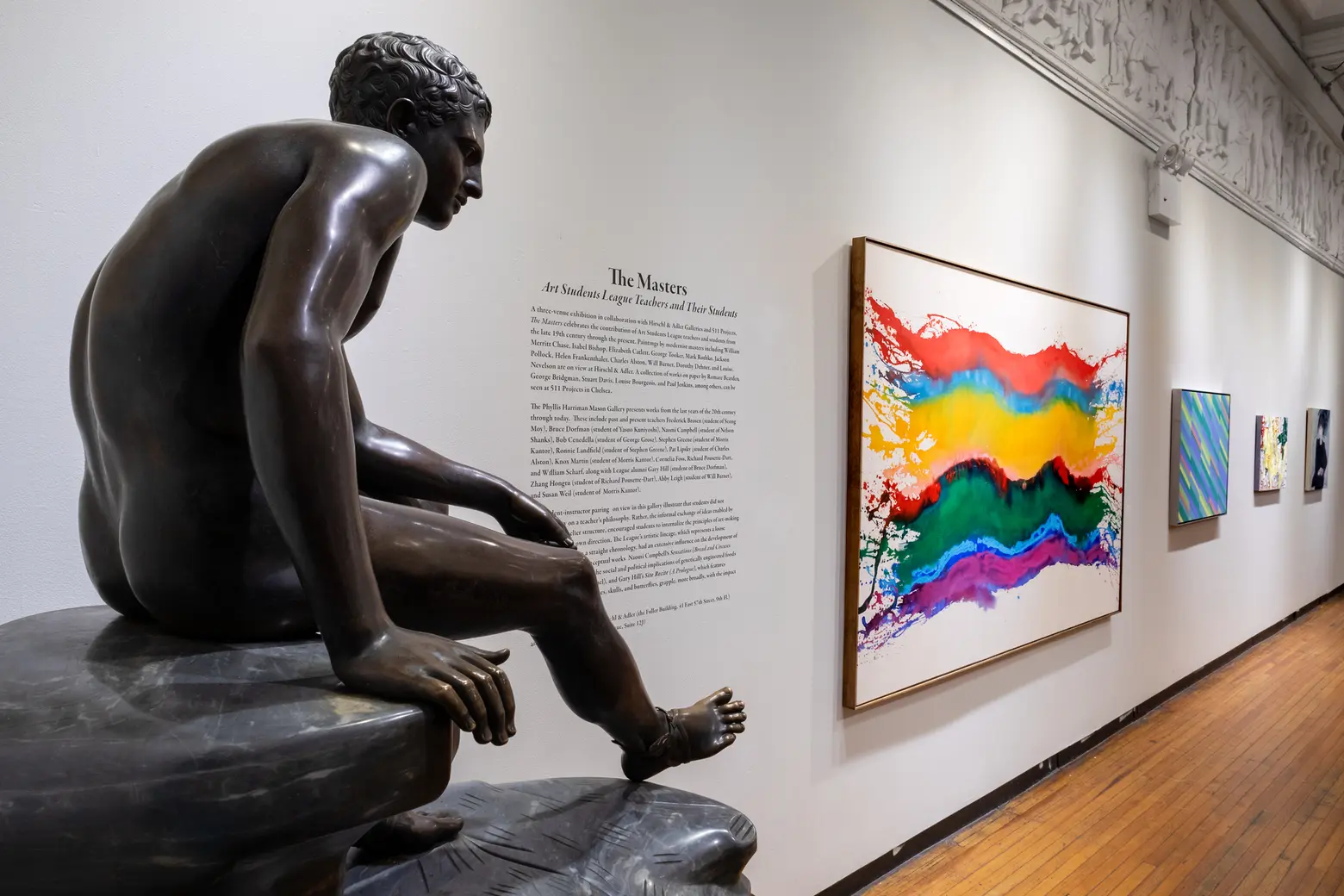
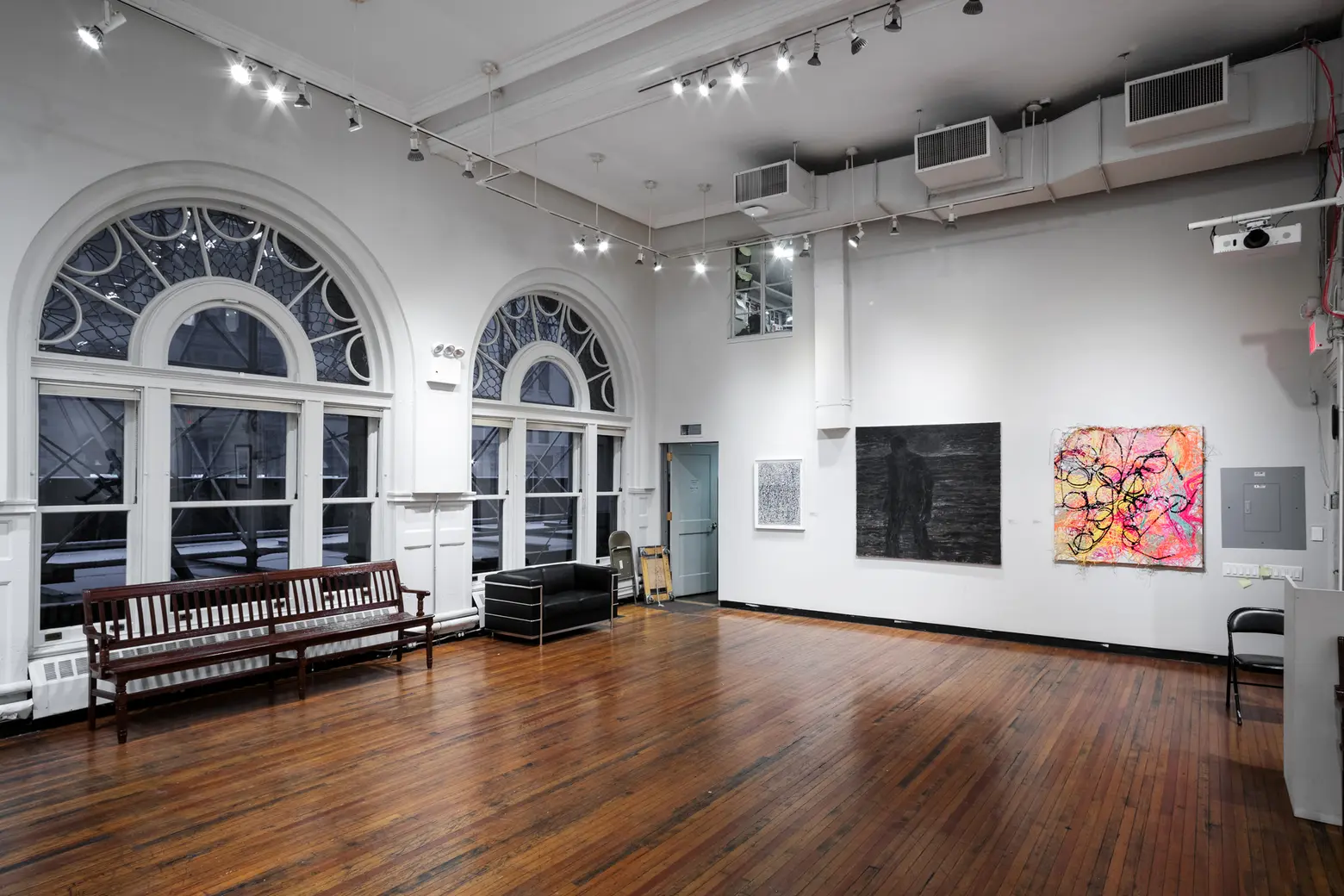
The Hirschl & Adler Galleries displays work from both students and instructors; lectures and events are also held here
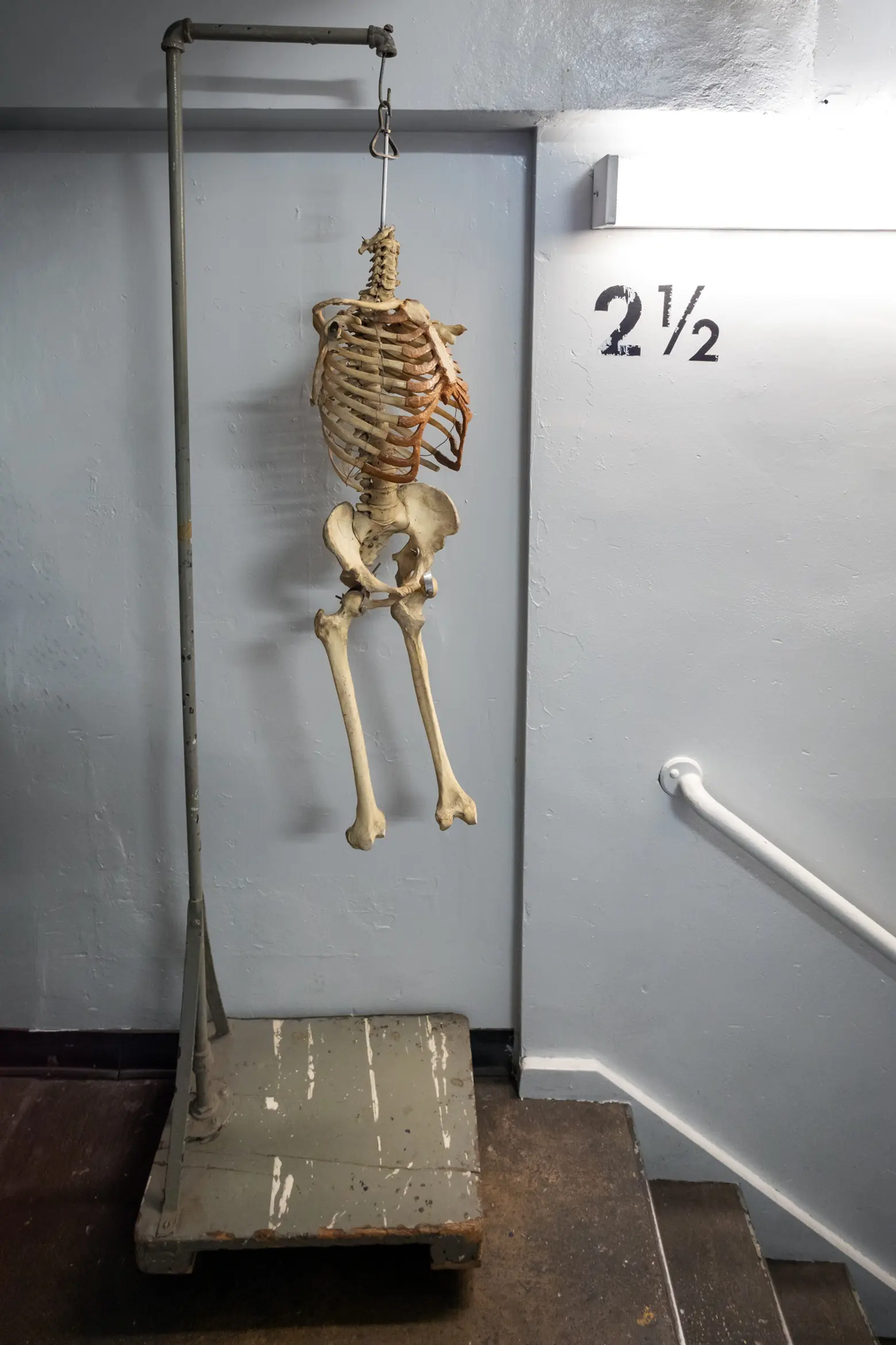
Curiously, the building has two half floors, floor 2 1/2 and floor 4 1/2
Currently, the League serves about 2,500 students of all ages and skill sets through 130 studio art classes in painting, sculpture, drawing, printmaking, and mixed media.
Unlike most programs, there are no prerequisites for admission and registration occurs monthly, providing a more affordable and flexible alternative to other art schools. Plus, there are no grades or exams. “You have people who paint like sergeants,” Park said. “And people who have never painted before in their life.”
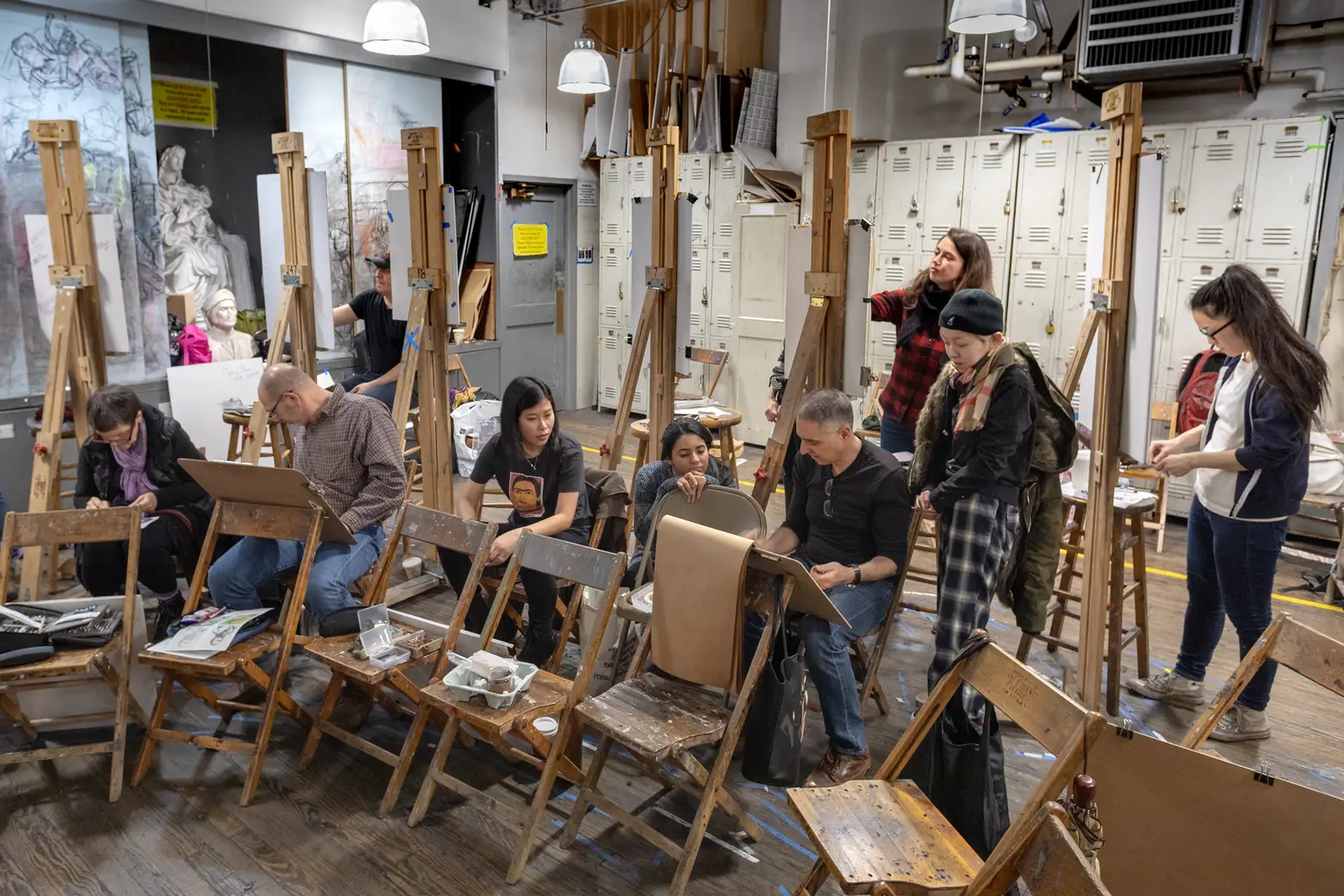
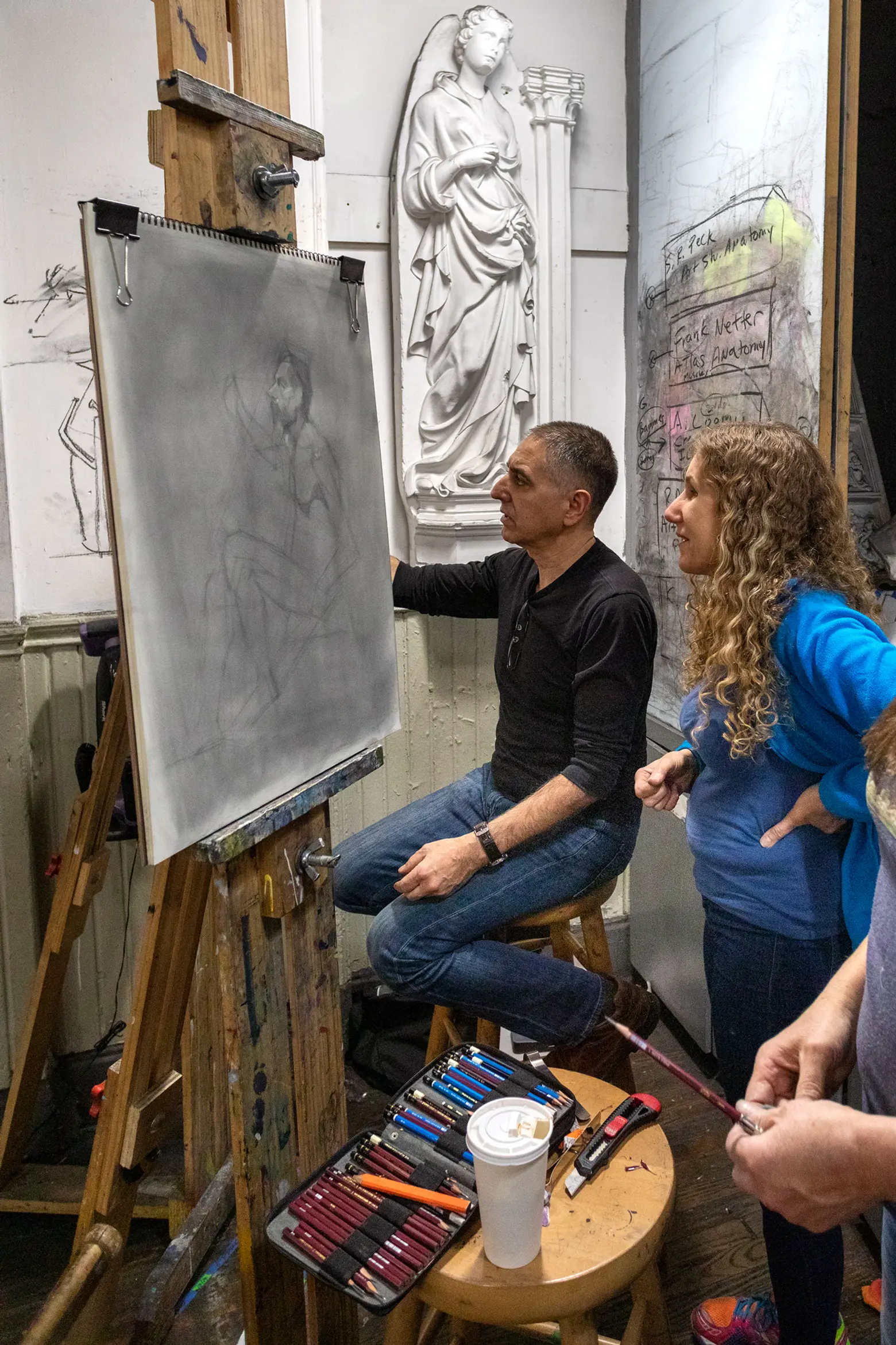
Instructor Costa Vavagiakis teaches anatomical drawing at ASL
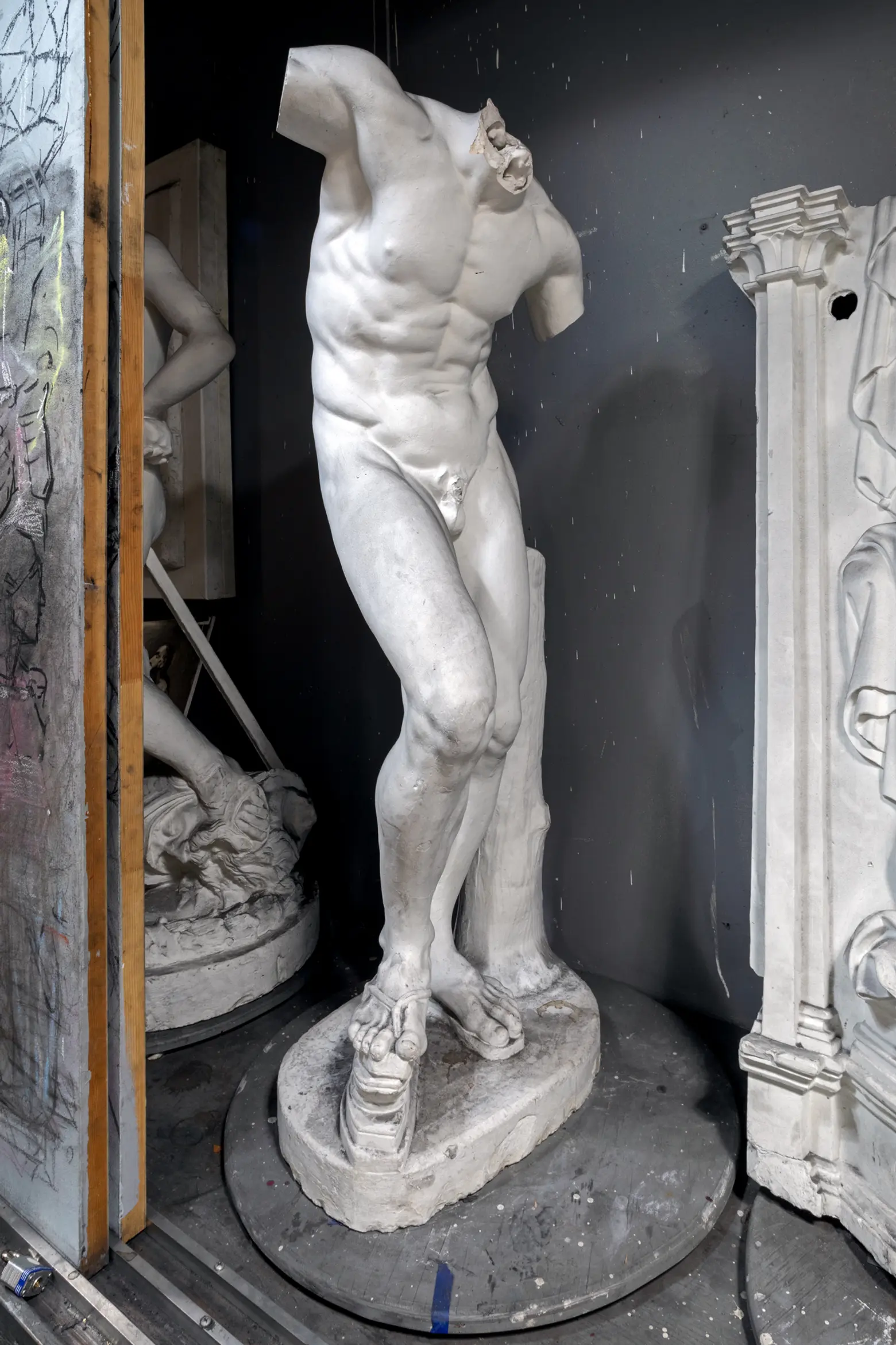
Before live models were used, artists relied on casts like this one
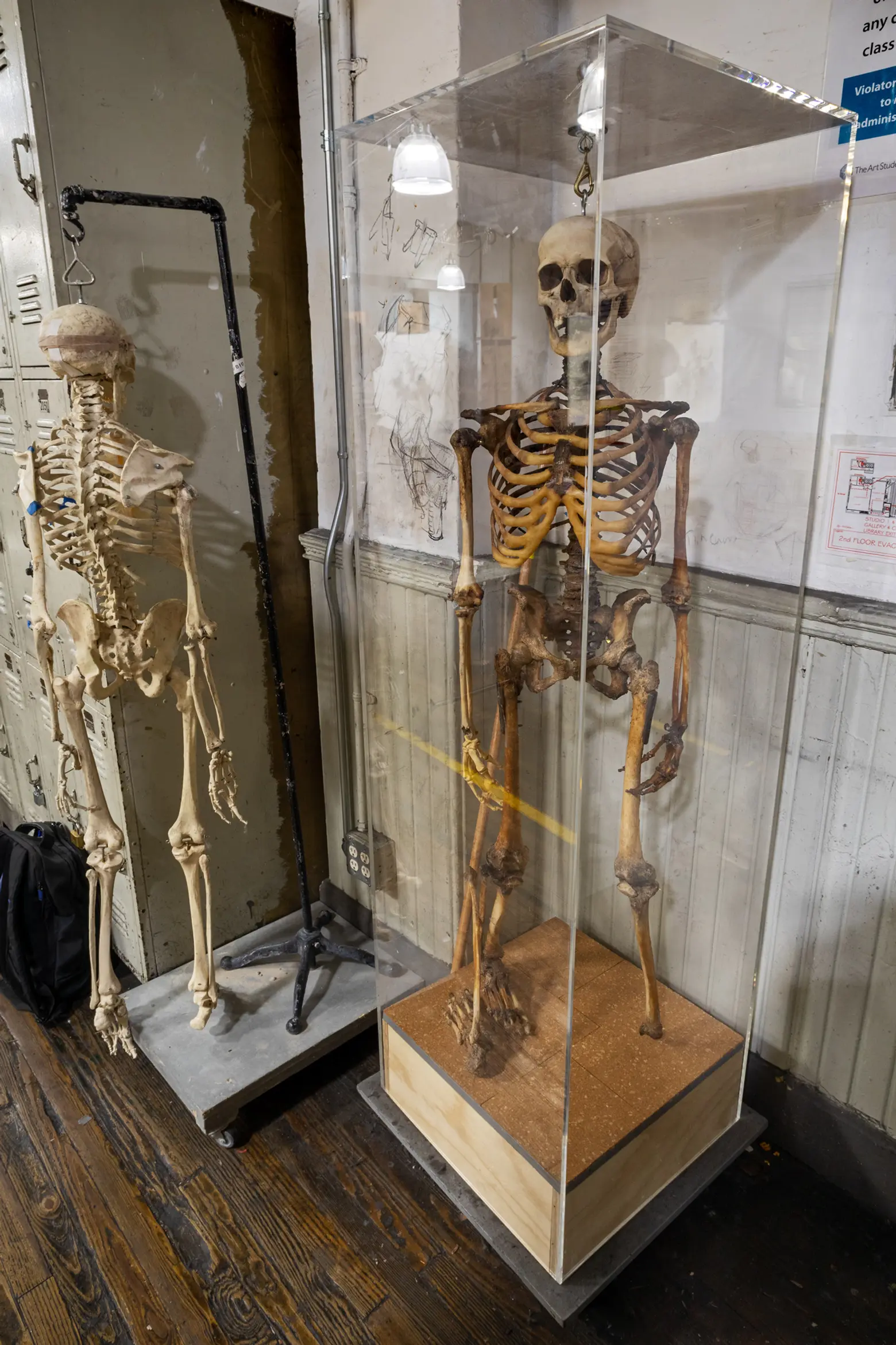
Former student Mafalda Brasile Hicks donated her skeleton to the League, to serve as a model for future drawing classes.
Making art education accessible has always been the focus of the League. According to Park, classes cost on average $280 per month at most, which comes out to less than $4 an hour. But the affordability does not diminish the quality of the courses offered.
Each of League’s 85 instructors is a professional artist, maintaining the French atelier system which has been in place at the League since its founding. This means a professional artist works directly with students in the studio.
Instructors apply for paid teaching positions and applications are reviewed by the faculty advisory committee. “It’s a prestigious place to teach,” Park told us. “Just because you’re a very good artist doesn’t mean you’re a very good teacher.”
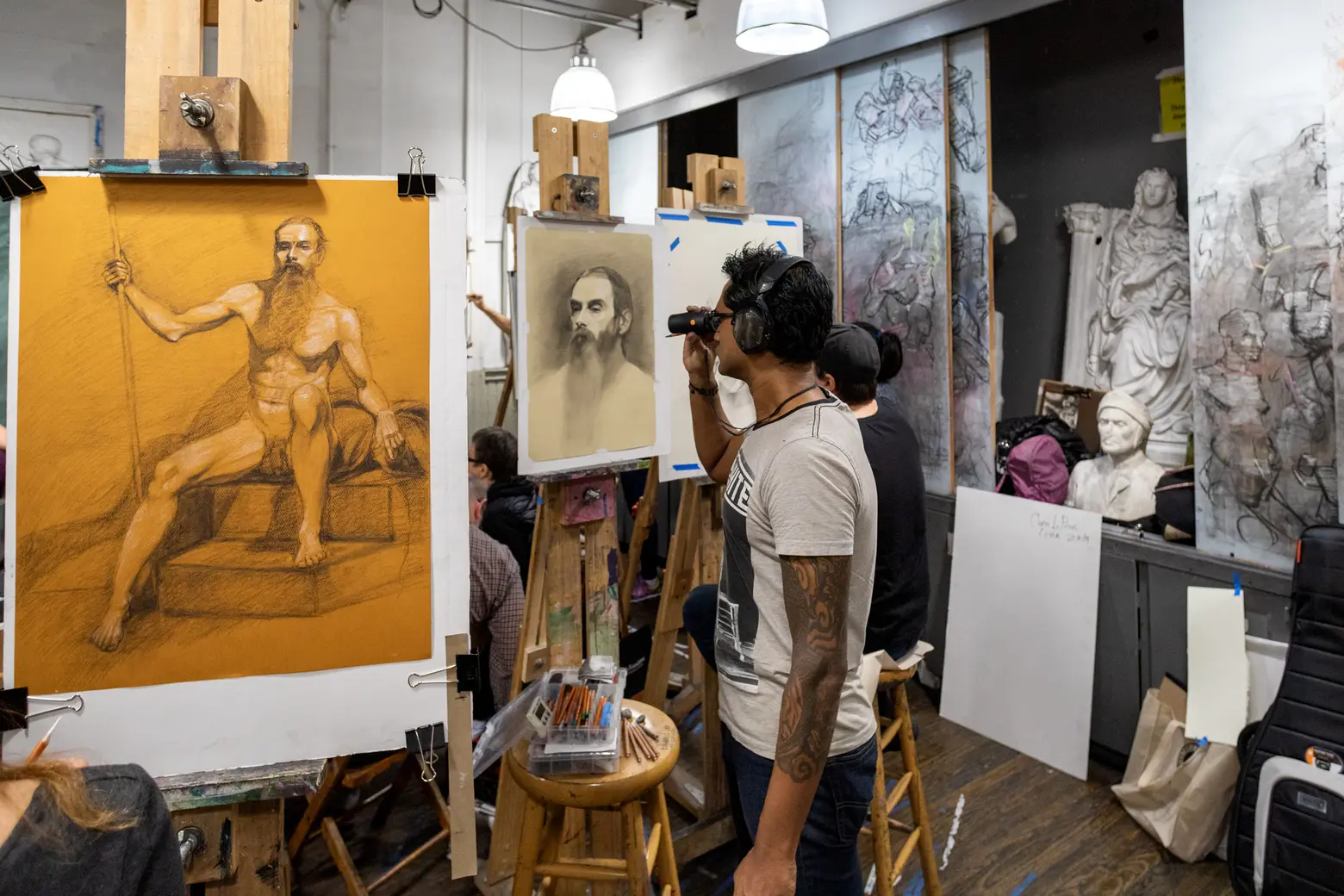
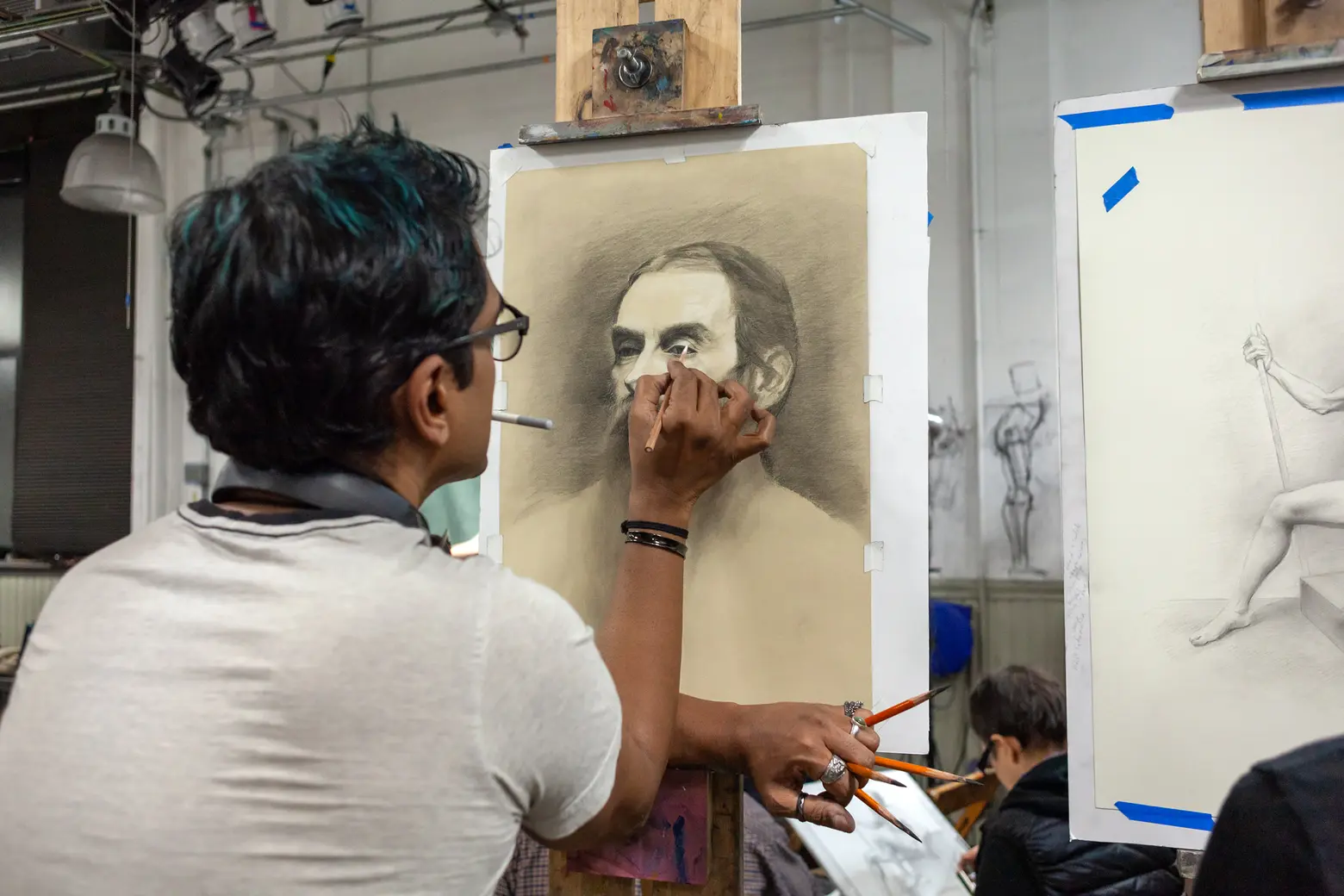
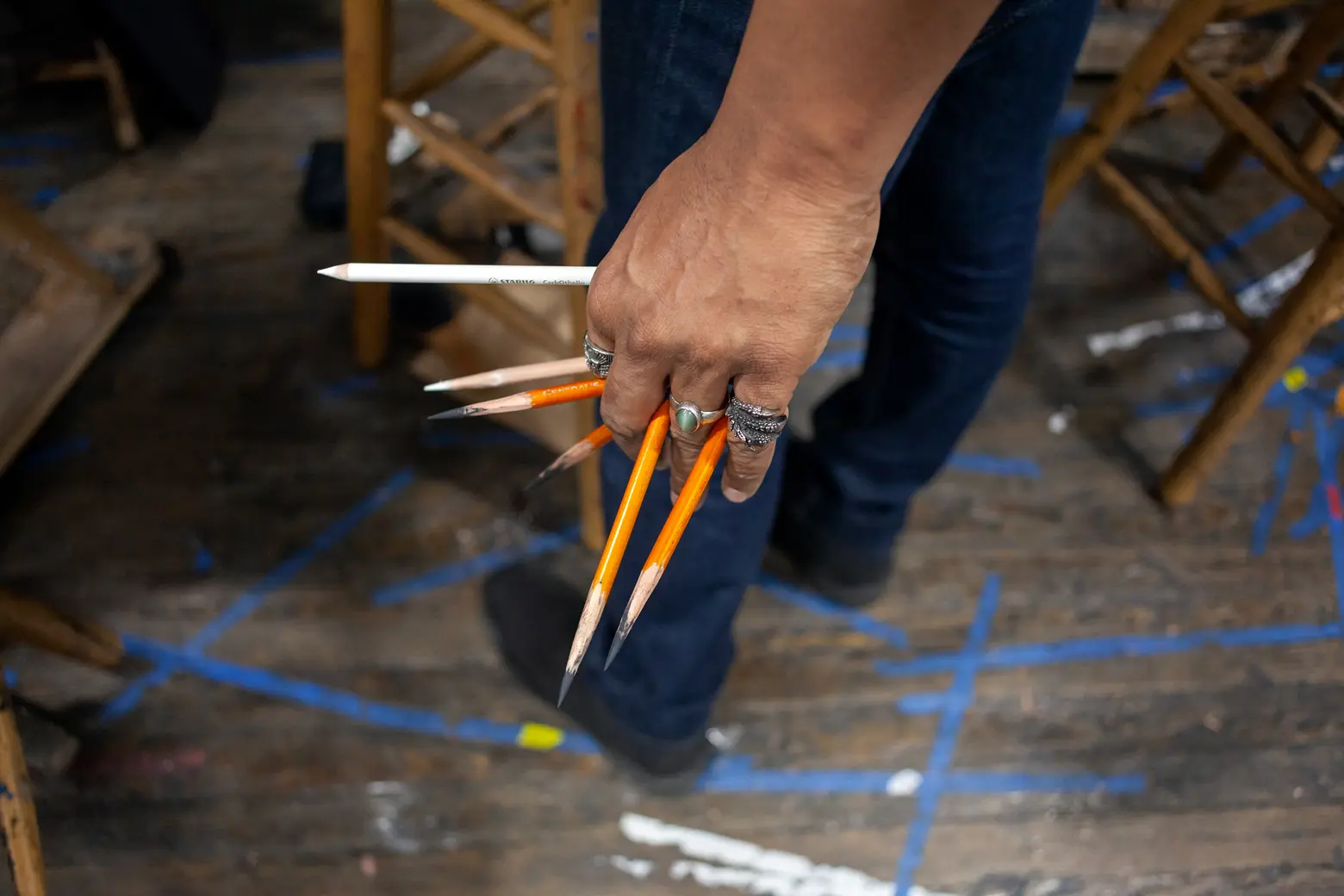
Properly sharpened pencils are a must
Instructors and lecturers typically teach for a year or two, while some go on to teach the same courses for decades. Distinguished teachers of the League have included William Merritt Chase, Daniel Chester French, Frank DuMond, and Kenyon Cox.
And the list of alumni is just as impressive. Artists who have attended class at ASL include Ai Weiwei, Jackson Pollock, Roy Lichtenstein, Norman Rockwell, Louise Nevelson, Georgia O’Keeffe, and many more.
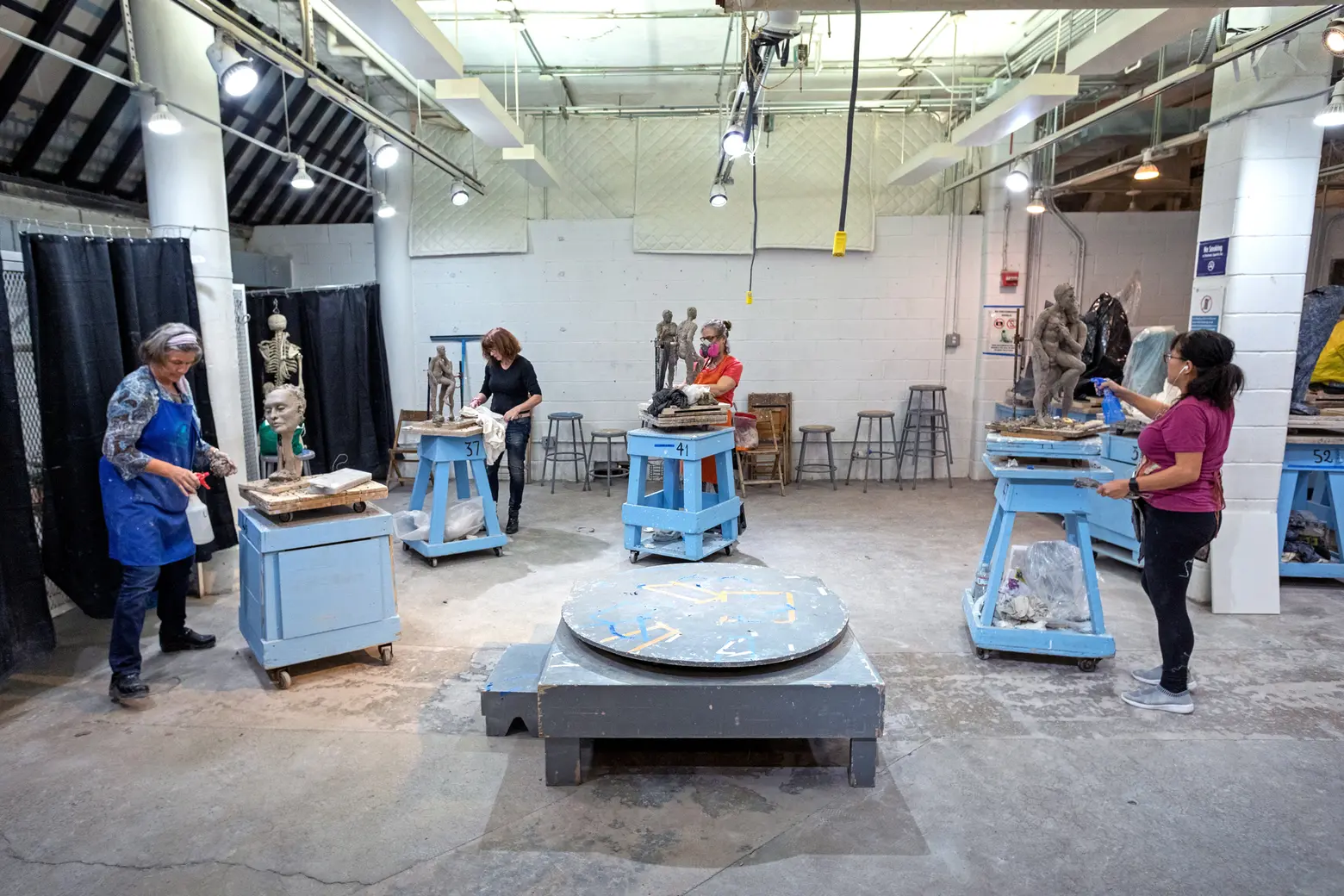
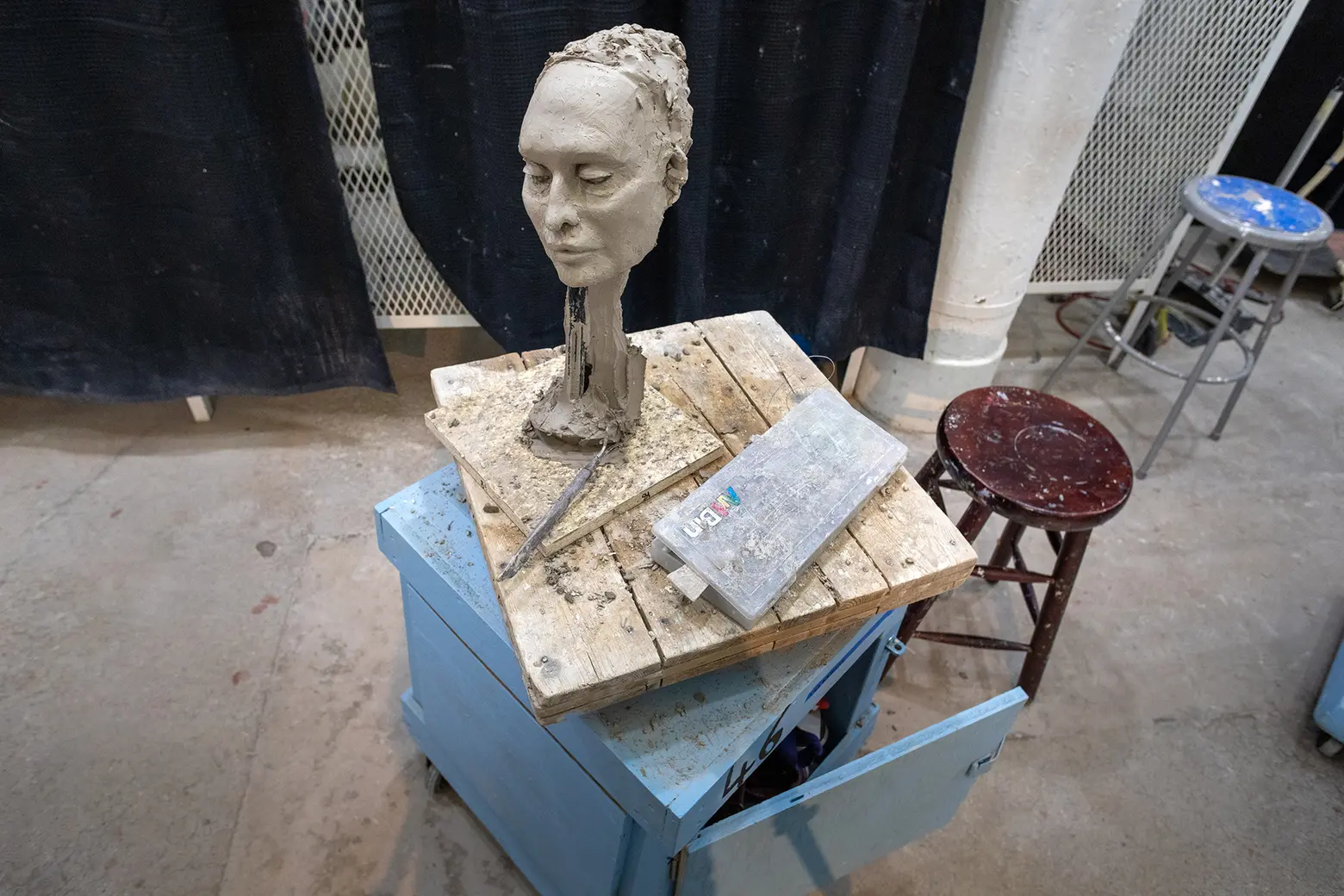
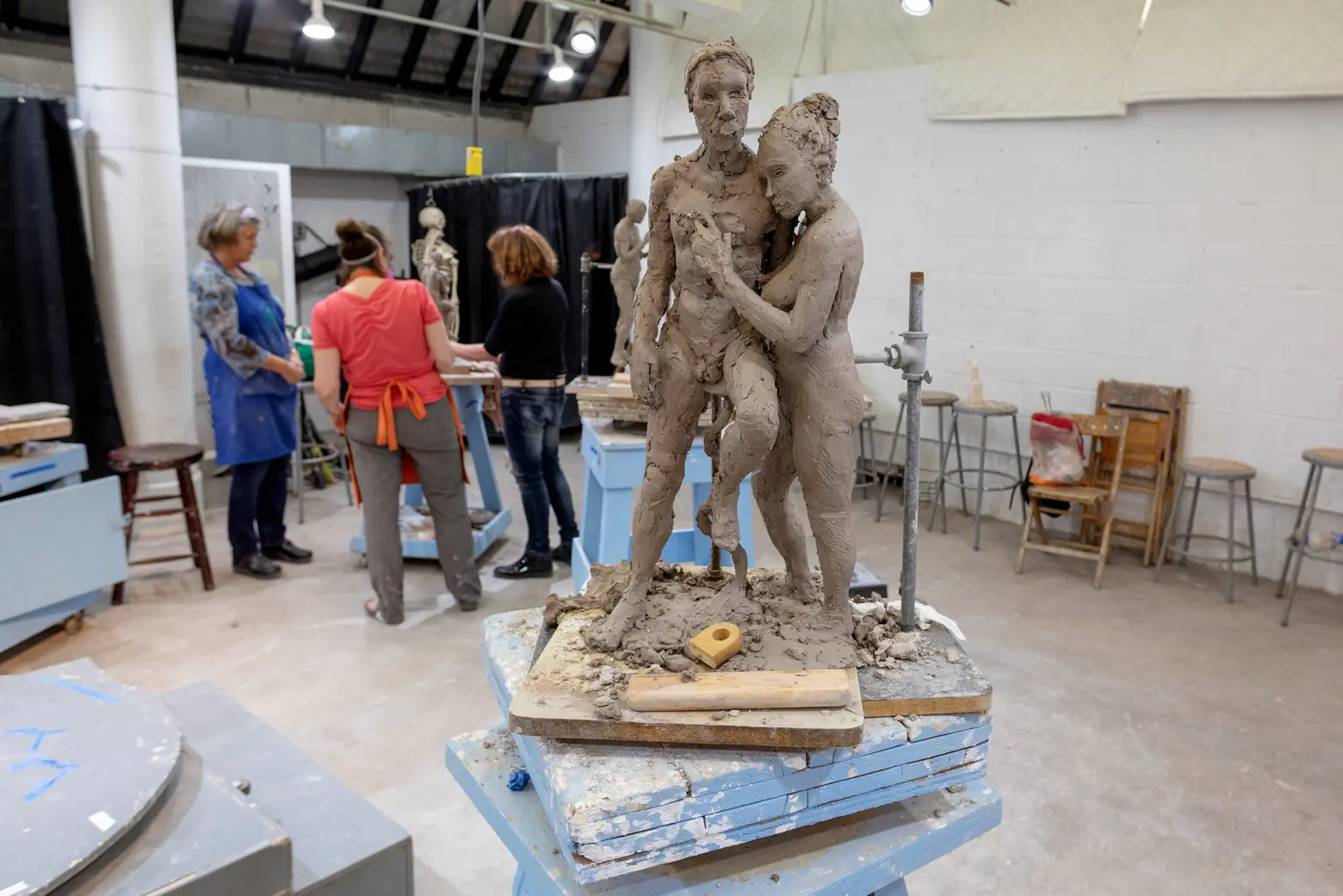
The models were absent this day, but students still came into work on their sculptures
Before moving into its West 57th Street location, the League had studios on West 14th Street and later East 23rd Street, with enrollment and membership growing with every year. At the suggestion of painter-lawyer Howard Russell Butler, the League joined other art groups, the Architectural League and the Society of American Artists, in 1889 to form the American Fine Arts Society.
The society board purchased six lots on a block between Seventh Avenue and Broadway for $154,000. The site was selected by Butler for the abundance of north-facing sunlight it received, specifically on the building’s fourth floor, where the painters would work.
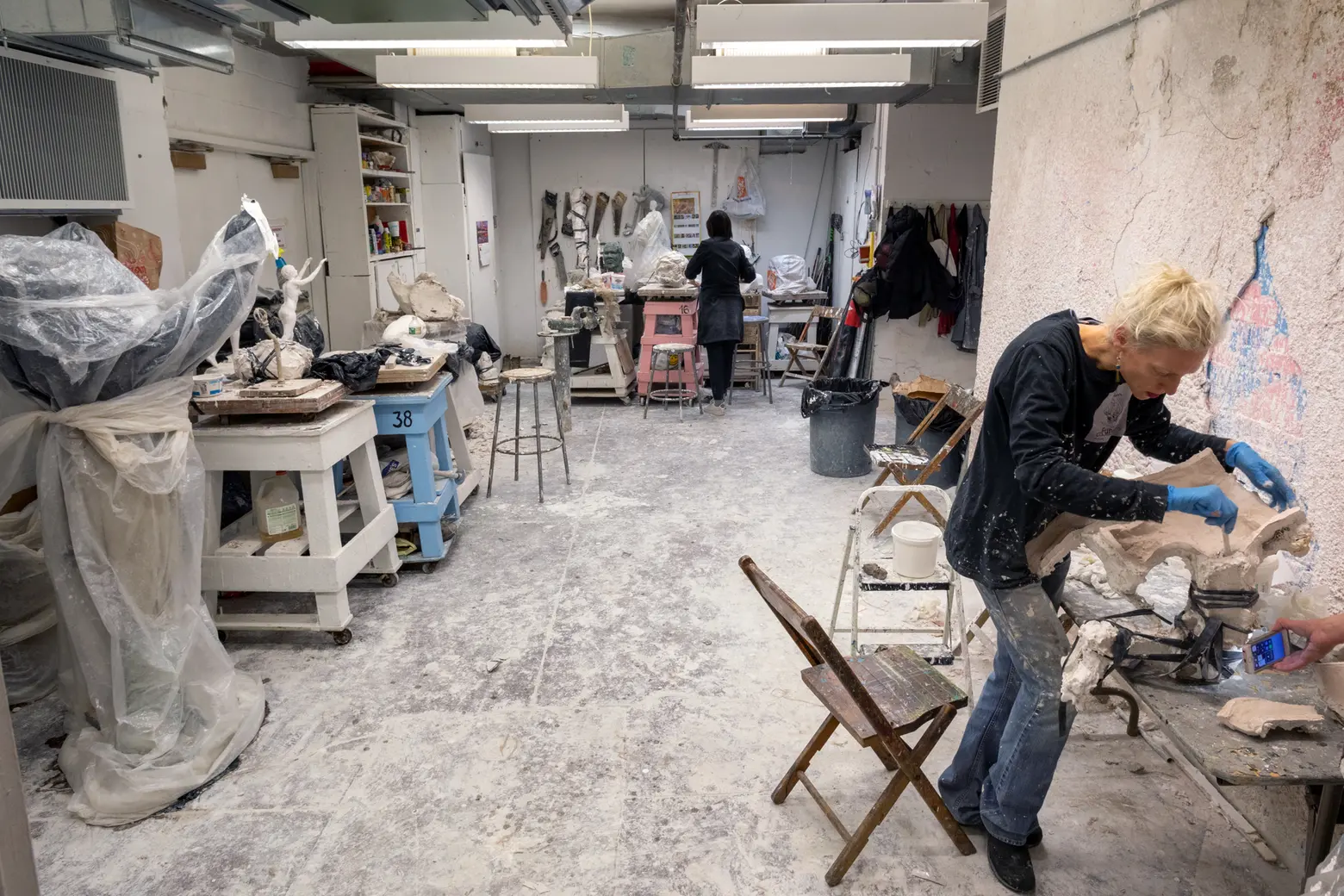
The “casting room” is in the basement of the building
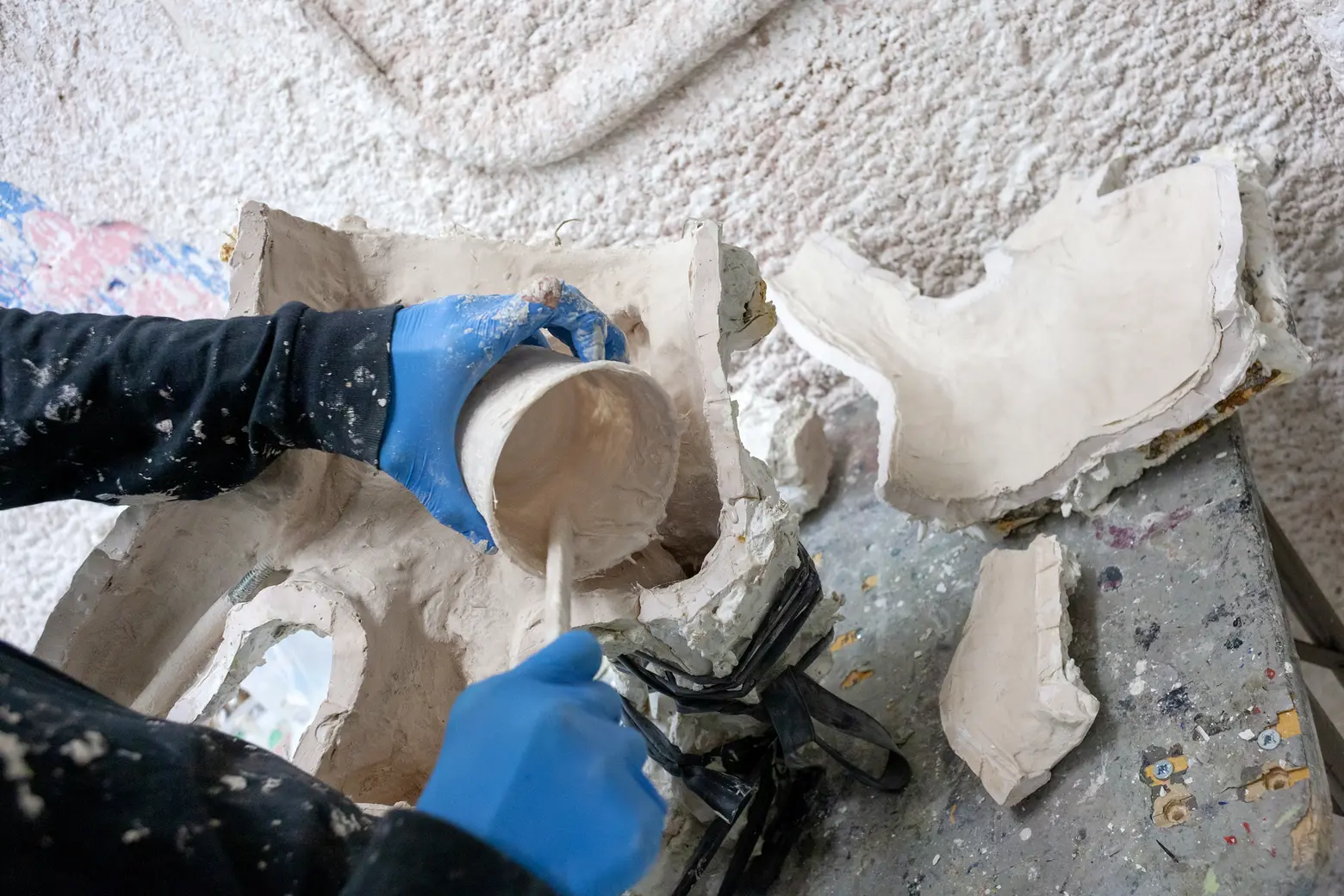
Plaster covers the walls
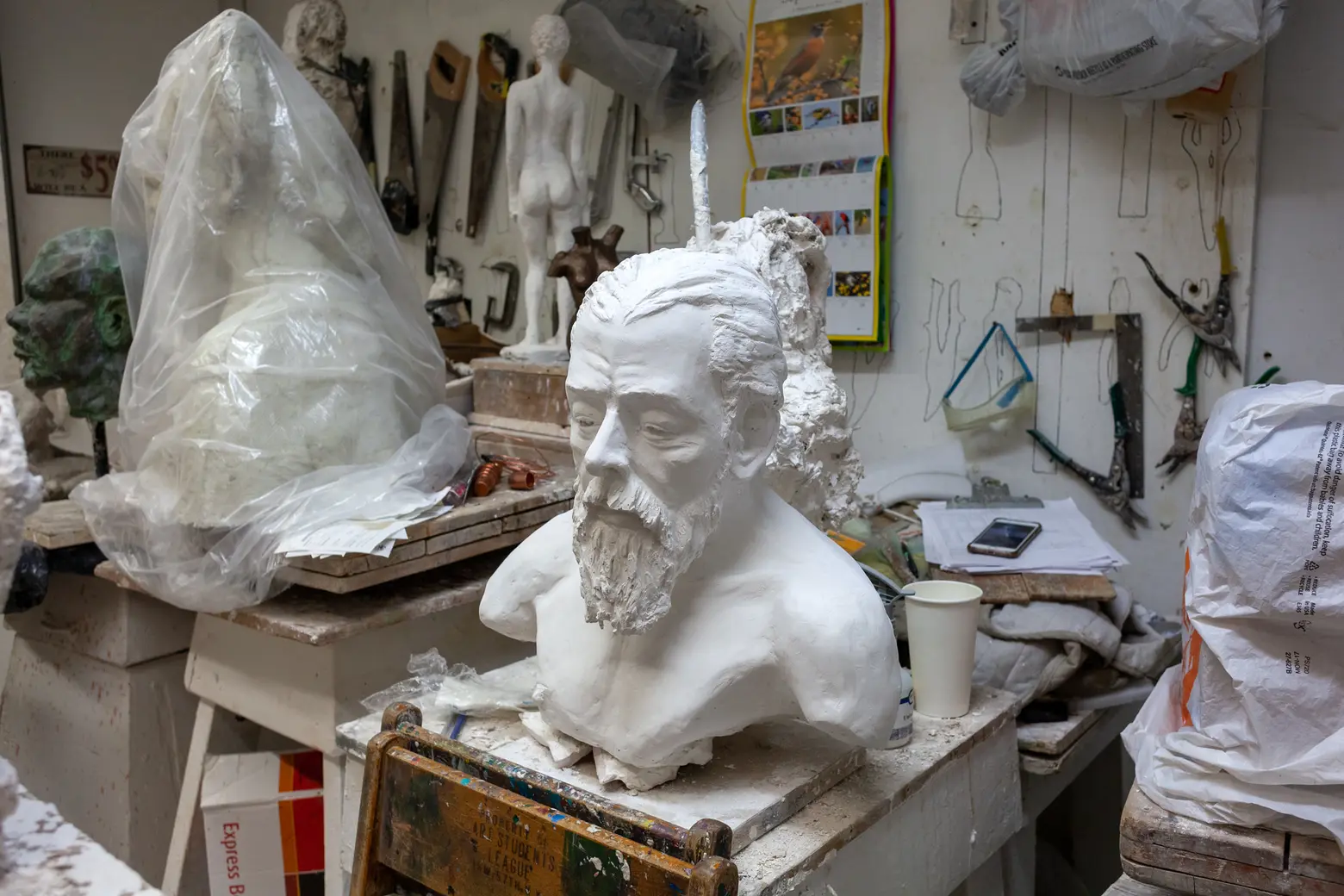
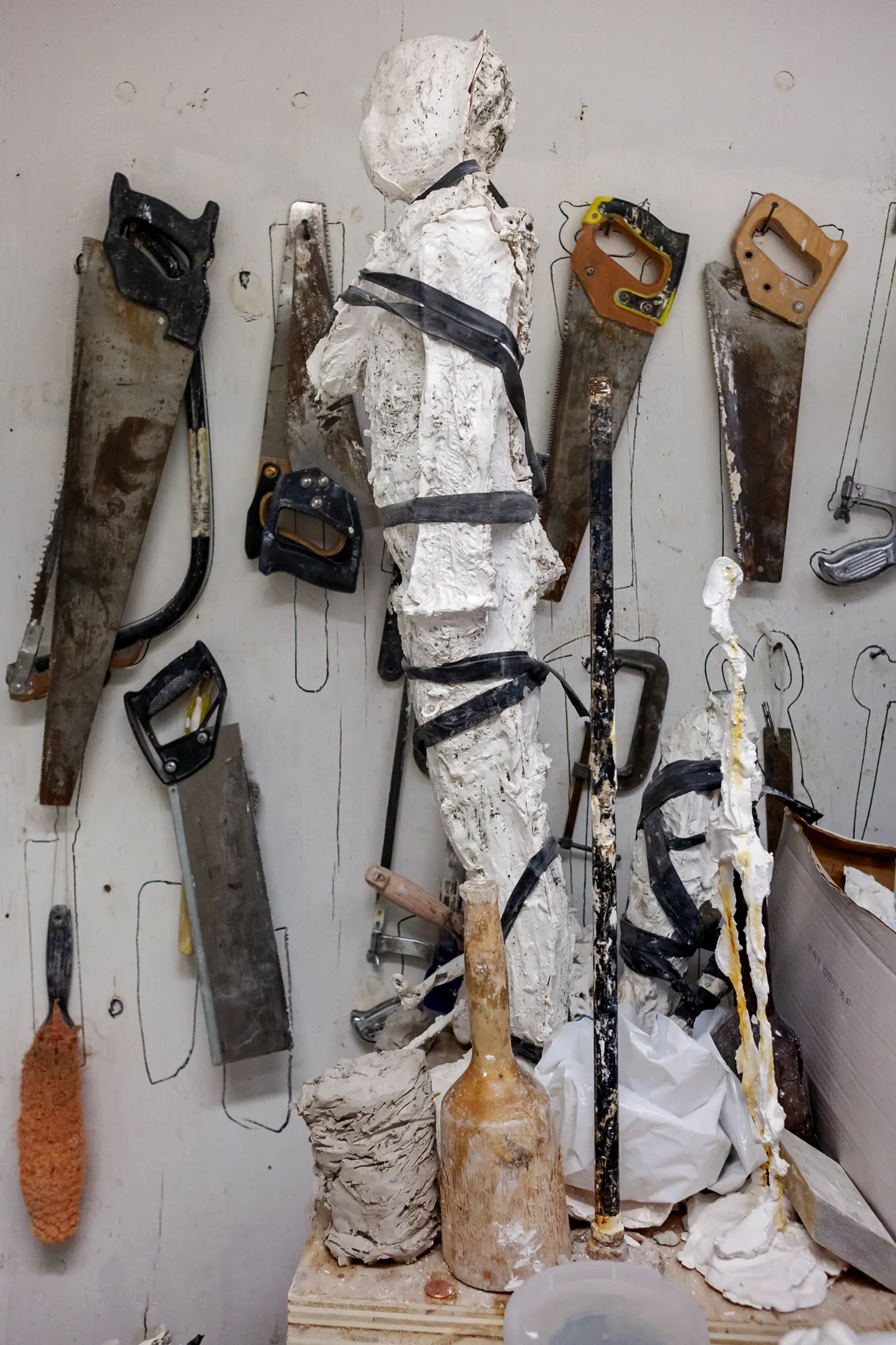
A competition was held to find an architect for the new building; nearly 40 entries were received. Ultimately, Henry Hardenbergh’s designs were chosen and unveiled in 1890. In its 1968 designation of the building, the Landmarks Preservation Commission (LPC) called it a “dignified adaptation of a Francis First, French Renaissance townhouse.”
The LPC found the Fine Arts Society building worthy of landmark status because of the building’s “special character, special historical and aesthetic interest and value as part of the development, heritage, and cultural characteristics of New York City.”
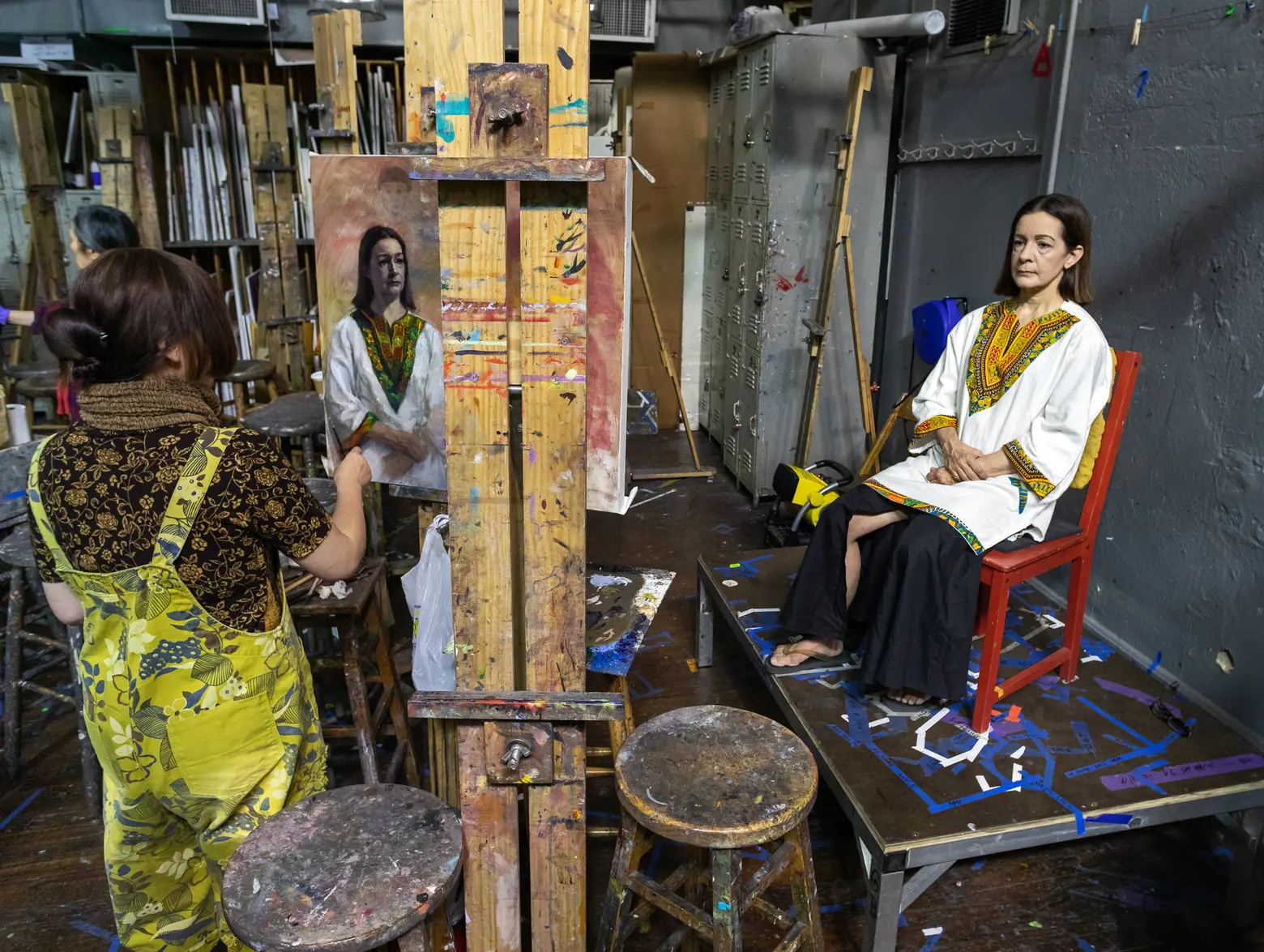
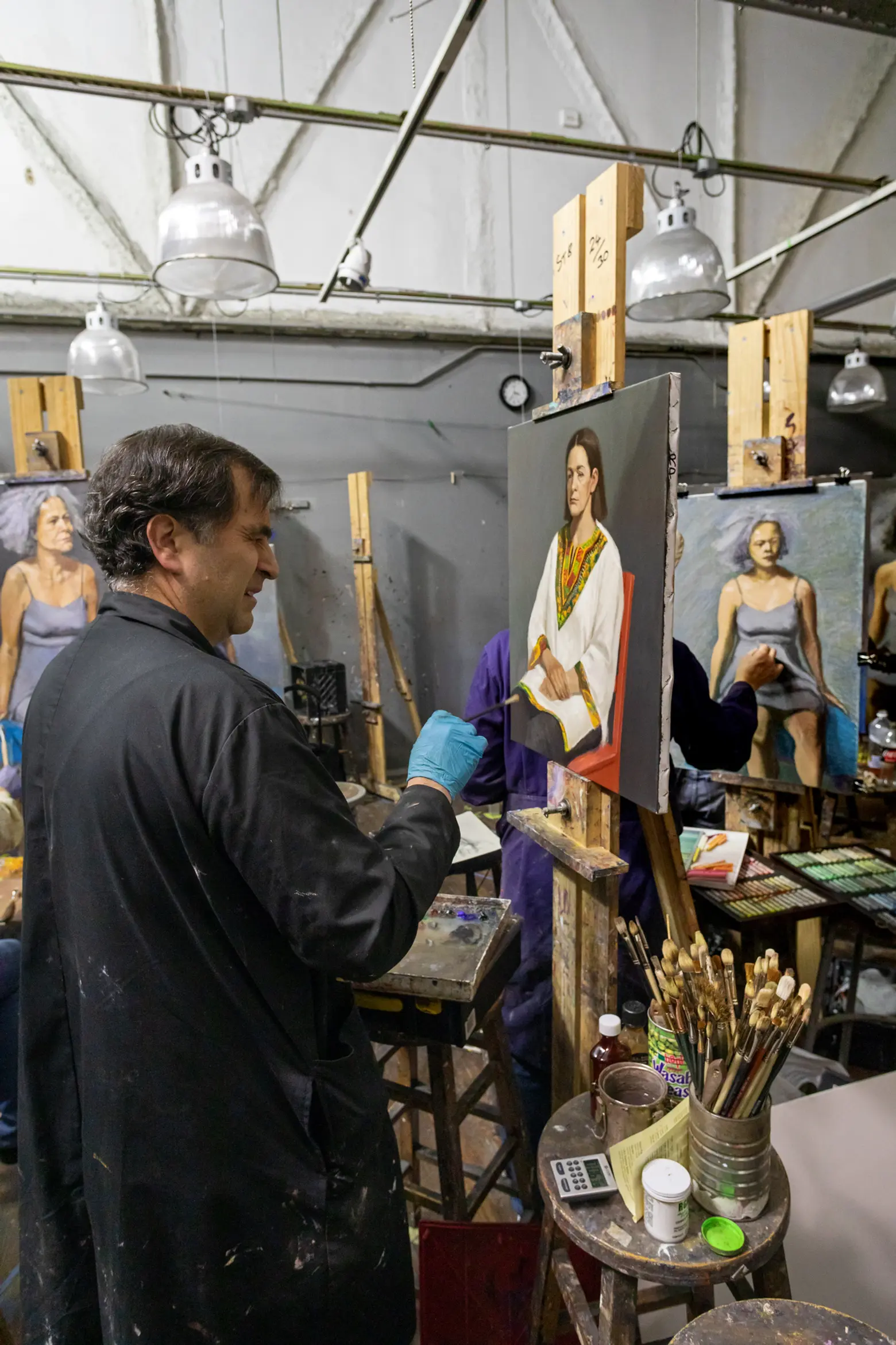
Construction of the supertall Central Park Tower, which cantilevers over the League, blocks the north facing light
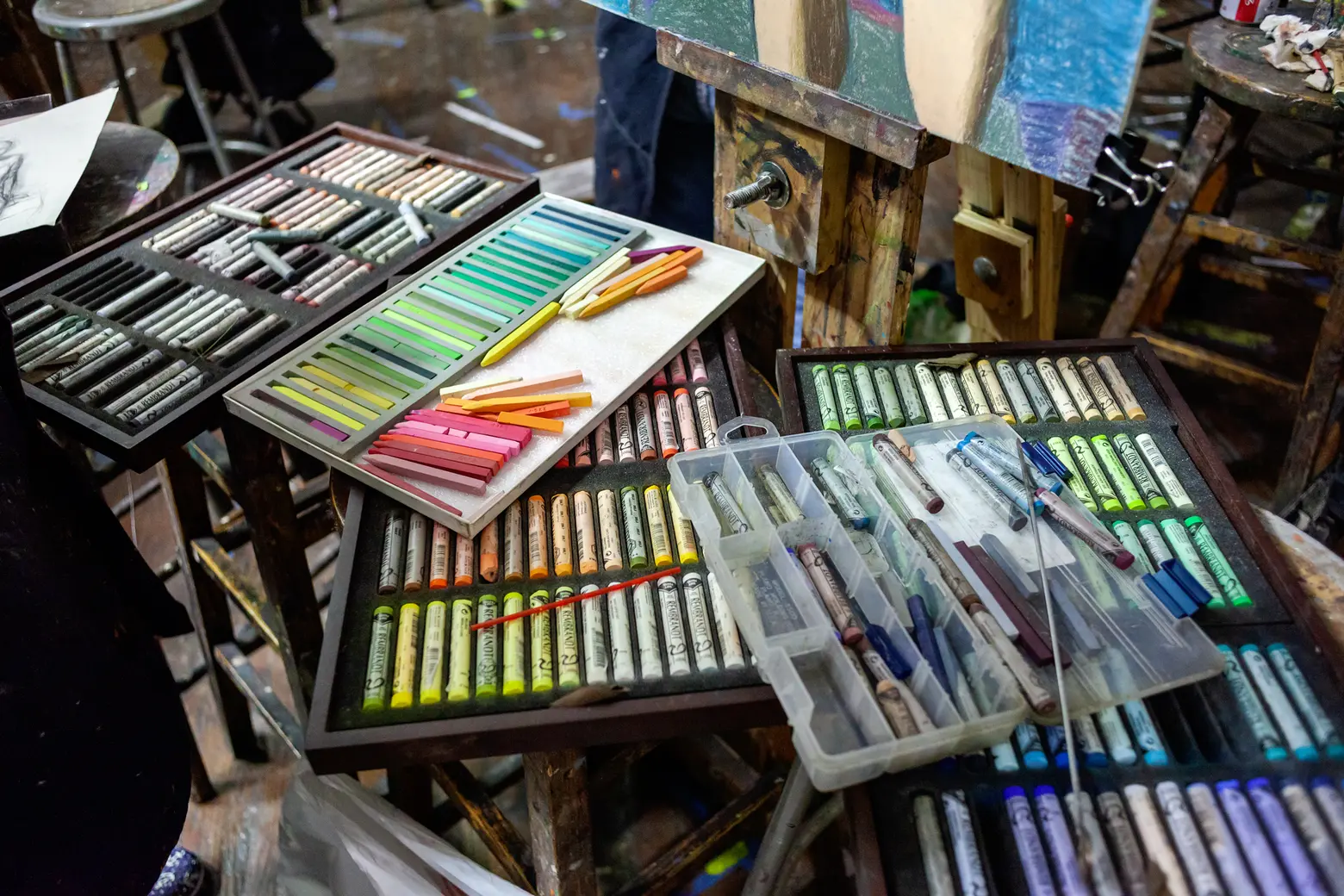
After the Midtown building was constructed in 1891, the three organizations moved in a year later. All major art exhibitions in New York took were held at the society’s galleries, until the National Academy of Design, which had acquired the Society of American Artists, acquired its own building on Fifth Avenue. That same year, the League purchased the interests of the other two tenants and became the building’s sole owner.
While the building has undergone some changes in its 140+ year history, the biggest have taken place in the last decade. In addition to an extensive renovation in 2003, the building is presently gaining a supertall neighbor, Extell’s Central Park Tower.
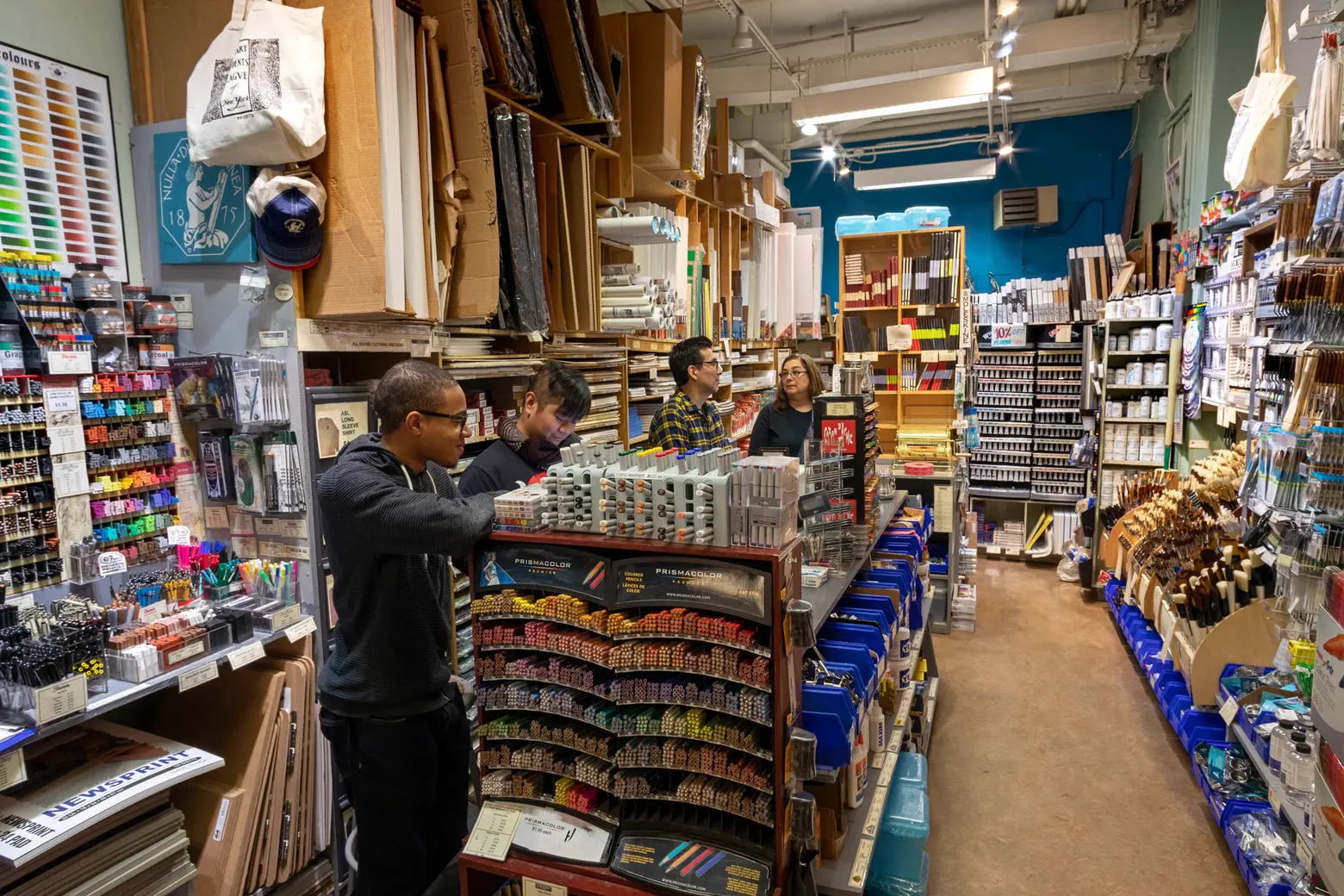
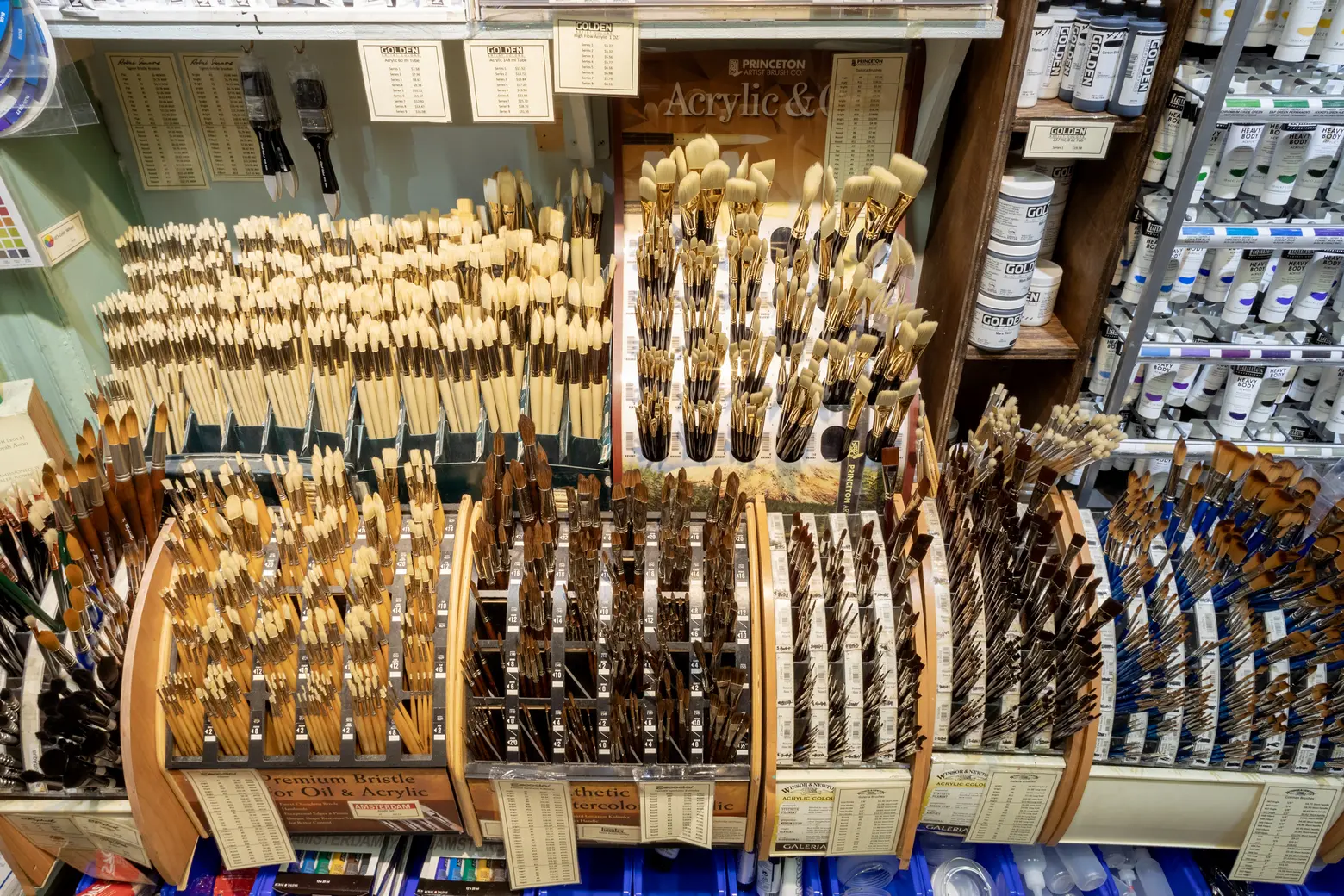
The League’s Art Supply is located in the building’s lobby; The well-stocked store is open to the public
In 2005, Extell acquired air rights from ASL for $23.1 million and later in 2014, the building sold additional rights for $31.8 million, allowing for the construction one of the tallest residential buildings in the world. Expected to open this year, the mixed-use tower is 1,550 feet tall and includes 179 ultra-luxury condos.
Because Central Park Tower cantilevers over the League’s building, a protective shed was built. Surrounding the exterior of the fourth level, the shed now blocks the north-facing light from entering the painting studio, one of the reasons the location was selected in the first place.
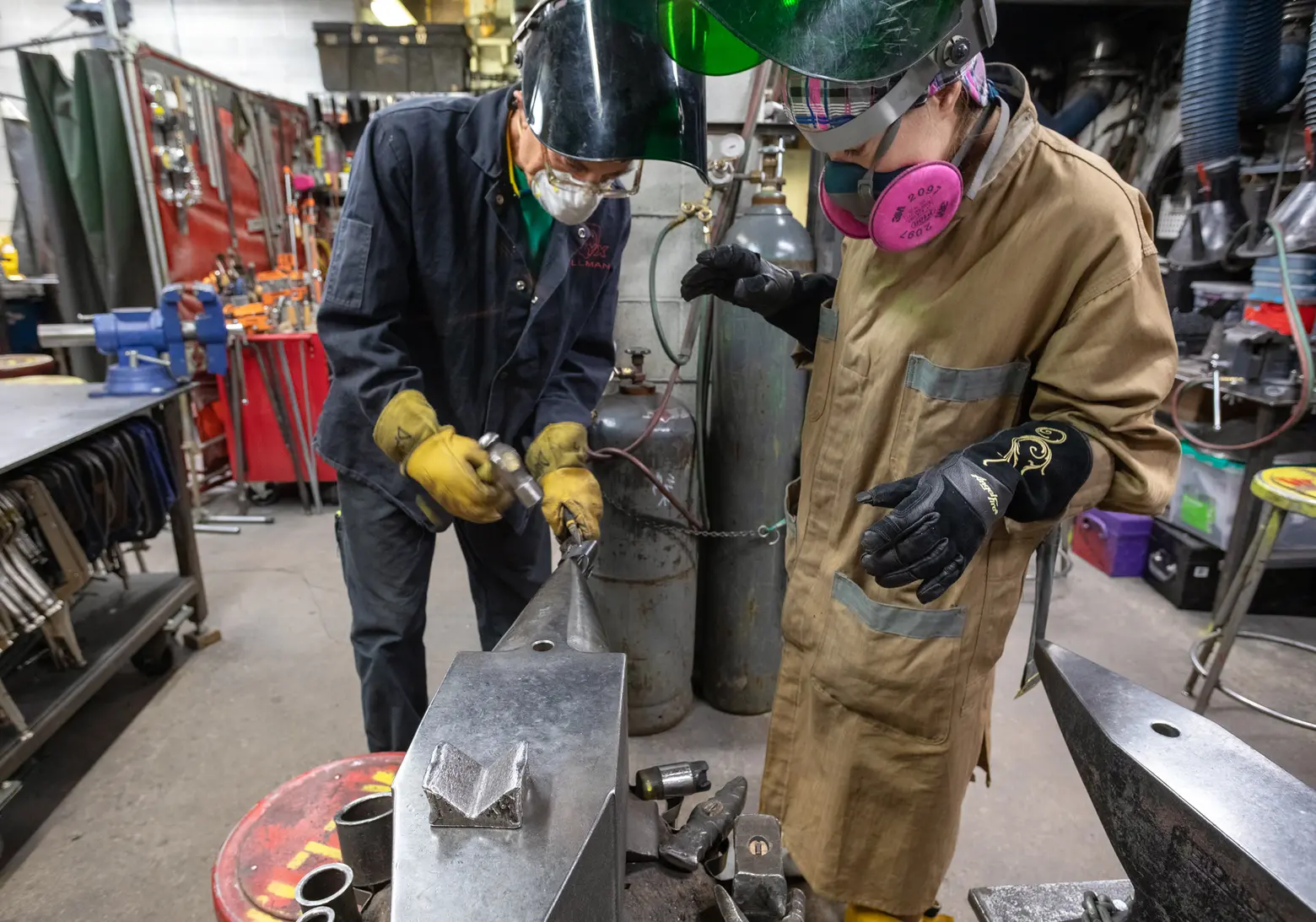
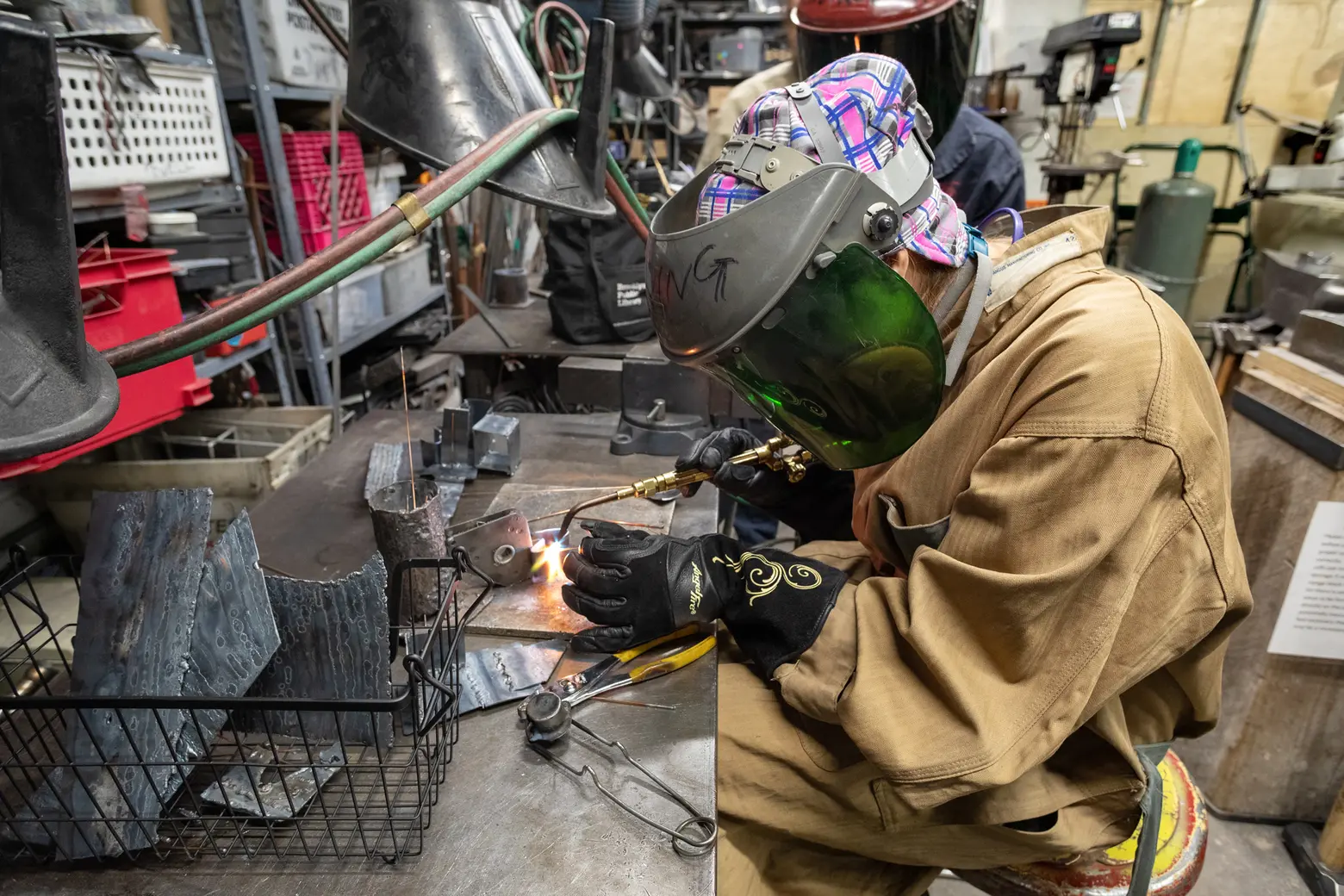
ASL offers welding and fabrication classes, at a slightly higher cost
However, Park told us that when the shed is removed, the light should return to the space, although not as much as there was prior to construction. “The hardest was when they were blasting next door. That was very noticeable,” Park said. “Since then, it hasn’t been too bad.”
Last year, the League celebrated the 125th anniversary of its landmarked building on 57th Street by opening its doors to the general public for the first time in 75 years. The gallery had been closed in 1943 to make more space for soldiers returning home from World War II and taking classes via the GI Bill.
The full list of available classes at the League, which mostly range in price from $120/month to $280/month, can be found here. Registration occurs monthly, with students allowed to start anytime based on availability.
RELATED:
- Where I Work: How design firm ICRAVE makes memorable experiences at its Nomad studio
- Go inside Bjarke Ingels’ vibrant new U.S. headquarters in Dumbo
- Where I Work: Jun Aizaki’s architecture and design firm CRÈME gets creative in Williamsburg
All photos taken by James and Karla Murray exclusively for 6sqft. Photos are not to be reproduced without written permission from 6sqft.
